After a spending some wonderful days in Germany with family, we took advantage of our being in Europe with a short flight from Munich to the Italian island of Sardinia!Sardinia has been on my mind as a possible destination ever since a college acquaintance–after he finished studying abroad in Italy for a year–pronounced its beaches the most beautiful he had ever seen. Aron and I visited Corsica, its French neighbor to the north, a few years back–and that further piqued our curiosity (as we loved Corsica and its Octopus-filled, clear waters so much).It was shockingly difficult to find information on traveling in Sardinia.
There were guidebooks, yes–we brought along a Rough Guide and some photocopied pages from Lonely Planet Sardinia–but not the usual array of magazine-suggested-itineraries, or Epicurious-generated restaurant suggestions (which I occasionally use to come up with itineraries). Moreover, the guidebooks make everything sound good, so I wasn’t sure which way we should drive once we landed in the captial-city of Cagliari. I wrote into the Fodor’s Forums (often a great resource), and with the help of one message-board member in particular, we decided to head first to the Eastern seaboard–to the Golfo de Orosei and the little town of Cala Gonone. By this time it was just a few weeks until our departure. Coincidentally, that same week, Joanna showed me that the last Budget Travel magazine contained a short feature on Sardinia; and their photos of the Orosei coast confirmed our decision.
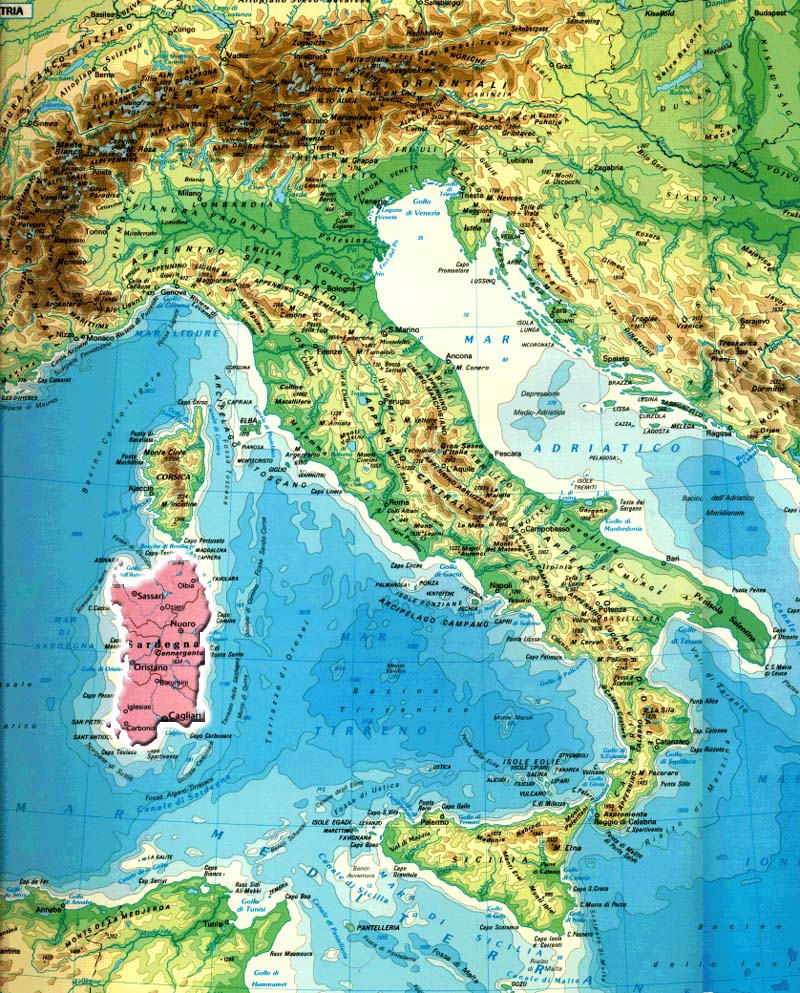
We landed in Cagliari a short 1.5 hours after taking off from Munich; Aron went off to pick-up our rental car (a little Lancia from Hertz) while I waited at the baggage carousel and tried to listen-in on others’ conversations so as to recall some basic Italian phrases and to figure out where the accent falls. It was hilarious to watch Aron making his way over to the door; he towered over the–mostly–tiny Italian women gesturing around him.
In no time at all, we were missing off-ramps and doing our best to get turned around en route to the major island highway: Carlo Felice, SS131. But once we figured out which towns were in our direction, it was smooth sailing. The road crosses the island, heading out of the industrialized area surrounding Cagliari and west toward Oristano, before bending back east toward the town of Nuoro. We were surprised how fast the drive went and made one of our first stops in Nuoro at a salumeria.
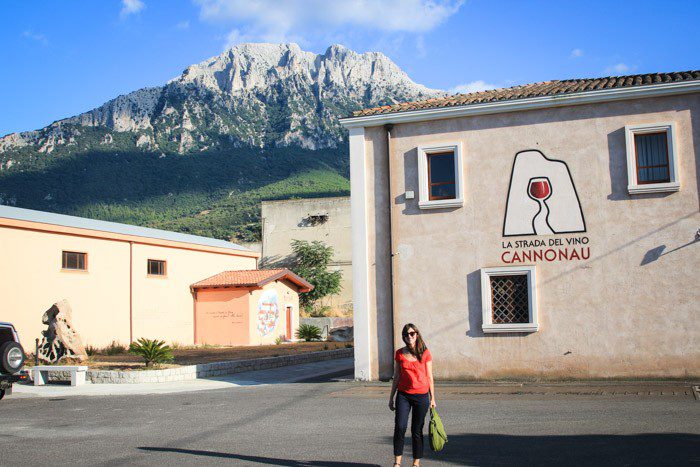
When we came to Oliena, we spotted a wine cooperative called Cantina Oliena, wherein we sampled a few different glasses of the region’s favorite, Cannonau, and took home a bottle of Nepente di Oliena. The wine was dark–nearly black–and quite rich and tannic. We learned that vitners from the area (nearly 100 winegrowers) typically cultivate a very small batch of grapes, and so they bring their grapes to be processed as part of the cooperative.We drove away and, just as I was reading us about the region’s history of bandits, I realized I’d left my purse on the floor of the winery. We sped back to find it right where I’d left it, and the same group of chatty older men who were more than happy to wish us well once again.
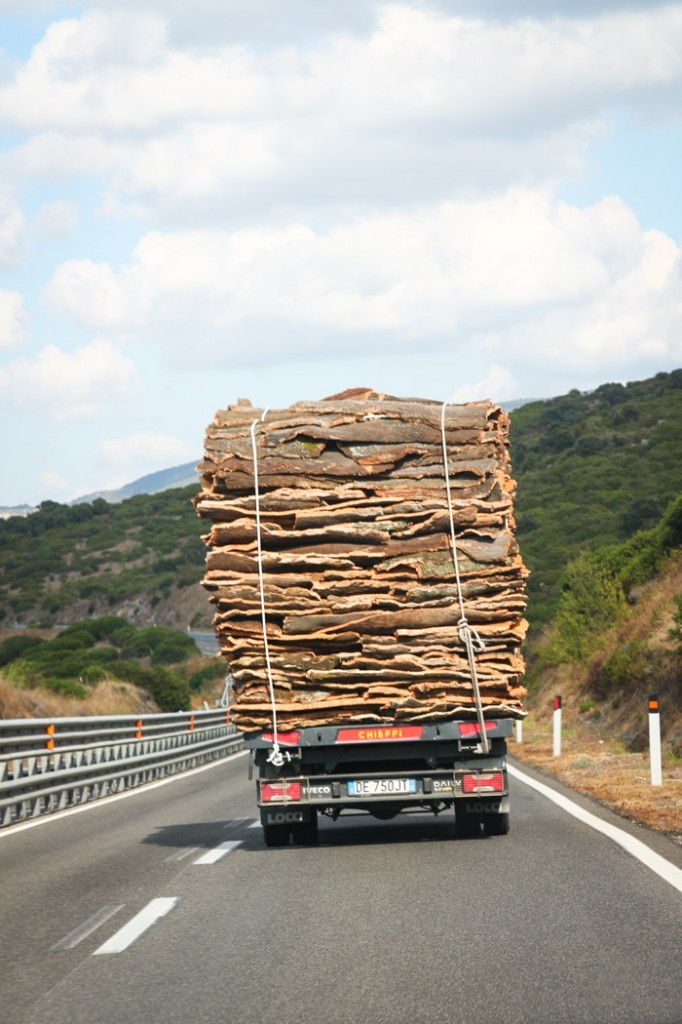
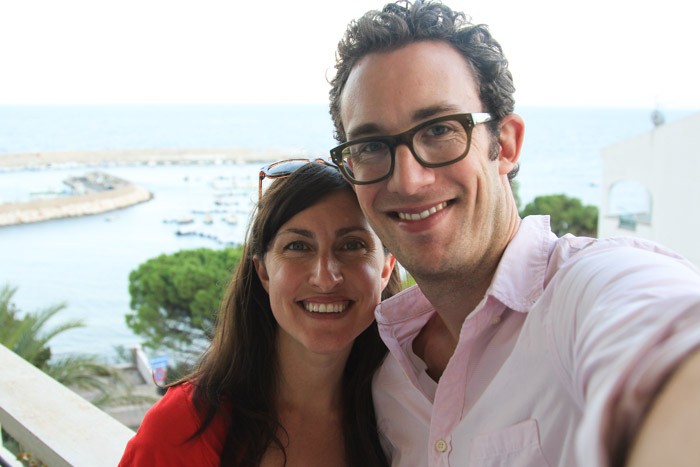
I couldn’t stop snapping photos of Aron (who looked particularly handsome driving a boat), and then we got out into the bright turquoise water and I couldn’t stop taking pictures of it!
Every hour brought different light and different colors. We marveled at all of the little coves we could pull up into, and flew by the beaches trying to decide at which we wanted to drop anchor and stay awhile. Toward the cape at the end of the stretch, the water seemed to grow choppy and I was bouncing quite a bit at the bow, but I seriously could have done this every day of the trip (and we probably would have, if it were less expensive).
We unpacked our picnic and watched the couples taking glamour shots of one another by the beautiful rocks and (literally) rolling in the surf. We brought magazines, but couldn’t take our eyes off the water.
The sun slowly sank below the steep cliffs behind the beach and so Aron swam out to get our boat while I gathered our things.
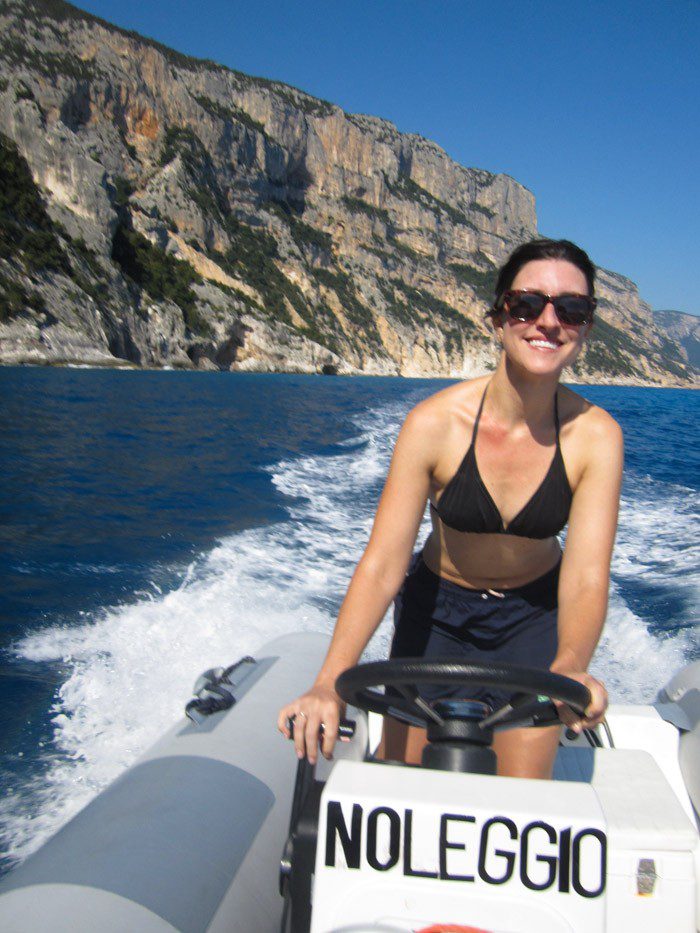

On our way back to the port, we took turns driving, and we alternated between speeding along the coast–joking with and racing against another small boat of older men–and slowing to admire the views in the changing light. At one point we stopped to circle a beautiful jellyfish.
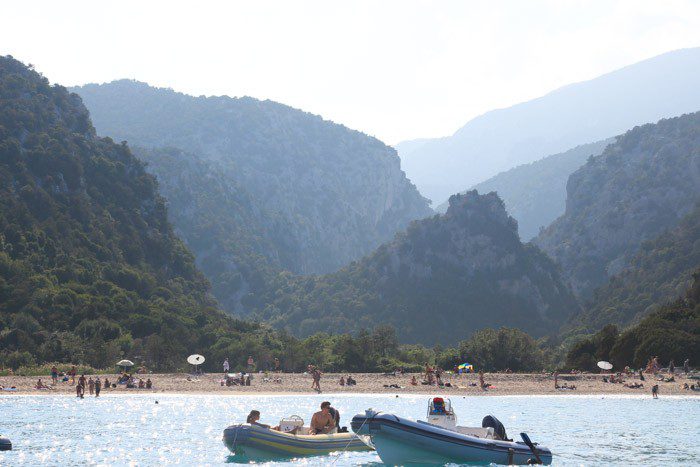
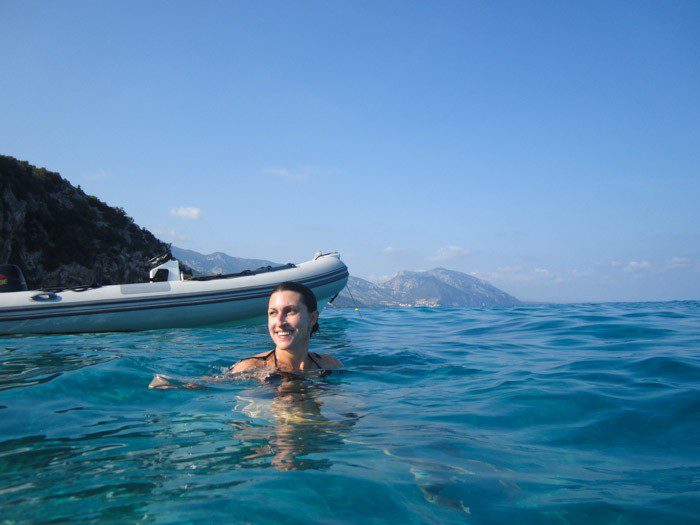
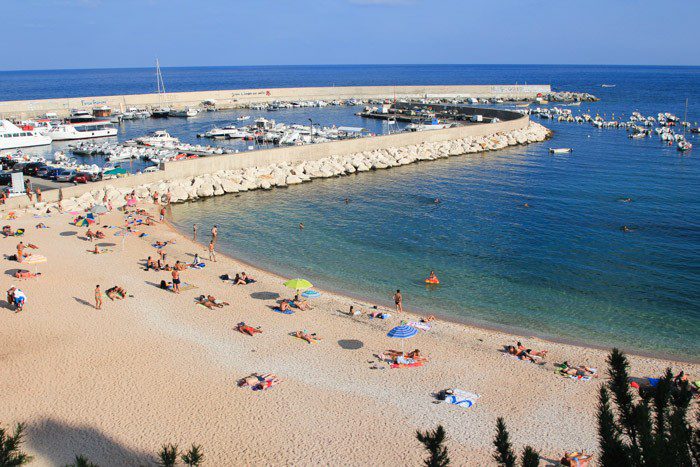
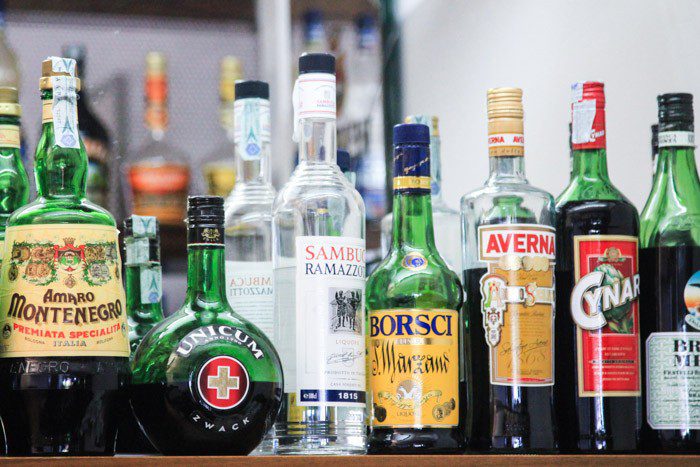
In that wonderful, slightly salty, post-beach glow, we stopped by our hotel’s bar to order some Aperol Soda and Amaro, which we sipped on the balcony before showering and heading off for dinner.
Before we had left New York, Aron had gone to B&N to pick up a copy of DH Lawrence’s The Sea and Sardinia, and discovered a beautiful cookbook: Sweet Myrtle and Bitter Honeyfeatures Sardinian recipes and short anecdotes from the author’s, Efisio Farris’s childhood on the island. Aron wrote the author to tell him we were headed there on vacation and asked for tips–something that would have never occurred to me to do!–and got such a nice reply from his wife, Lori, with a list of suggestions. It turned out that their family has a restaurant just 30 minutes from Cala Gonone, in the town of Orosei.
So, for dinner, we hopped in the car and drove up, up, up the mountain on this tiny, windy road with incredible views (and incredibly close drop-offs) to visit Su Barchile.
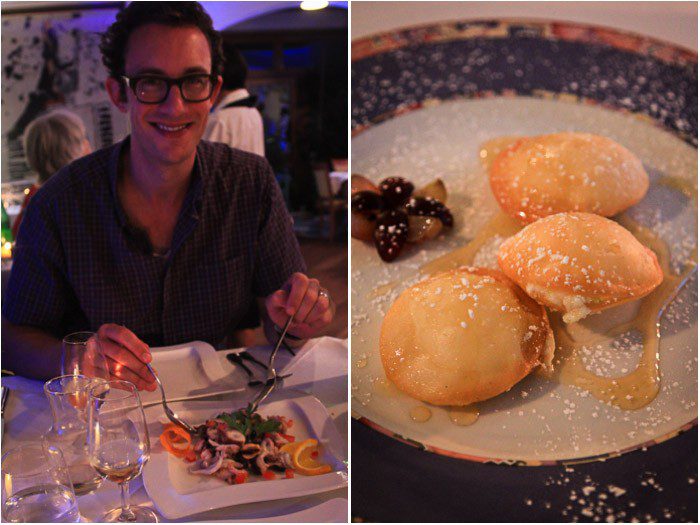
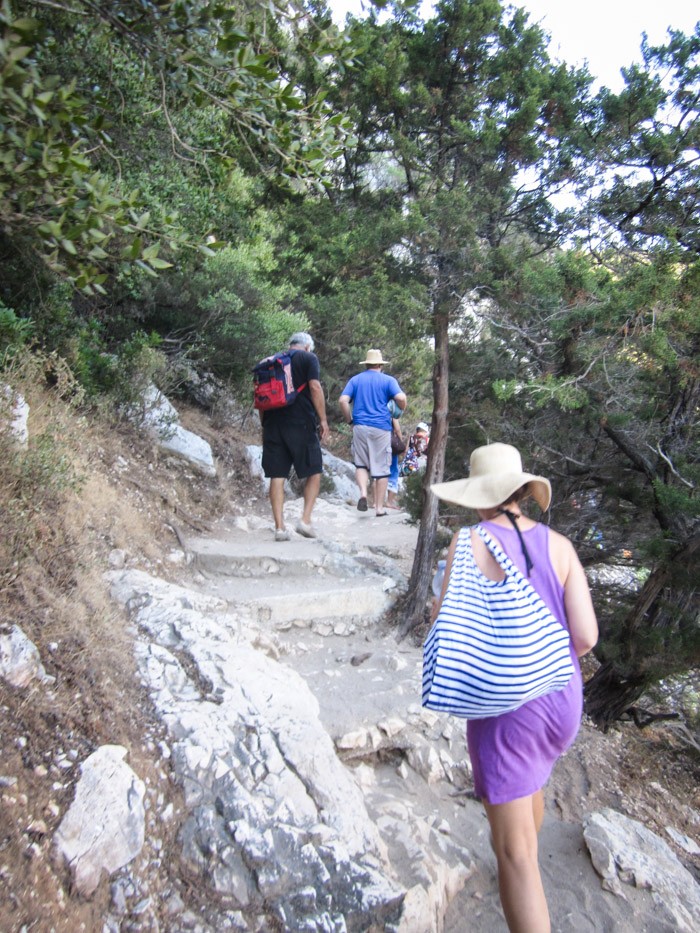
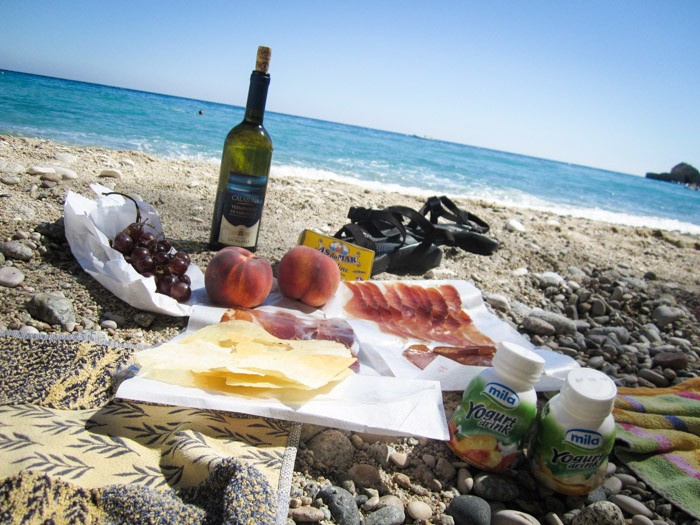
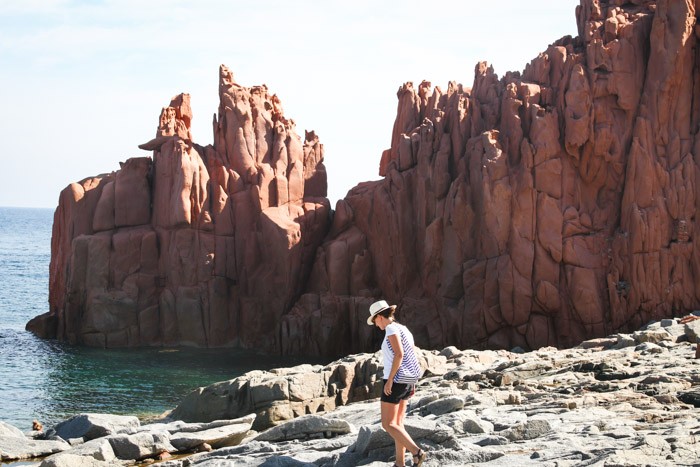
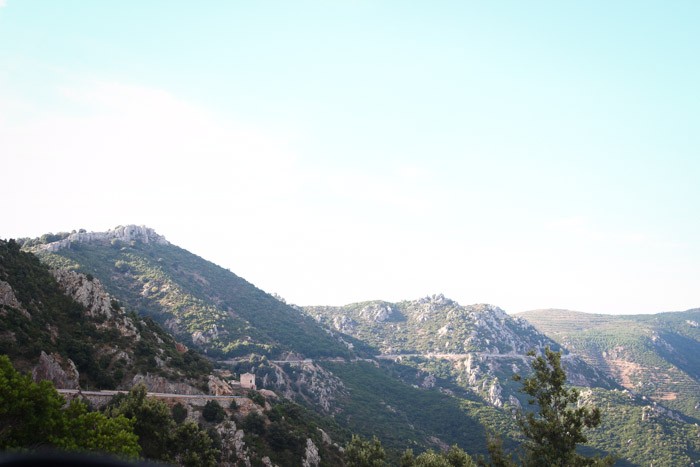
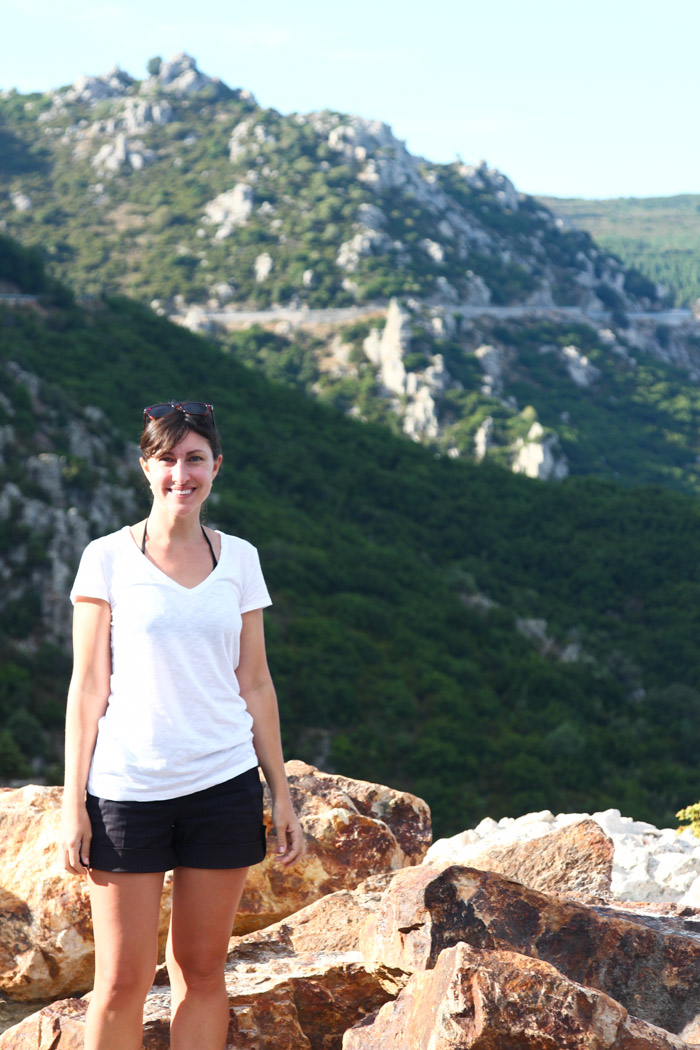
The road to Abatax, however, was more noteworthy. After coming back through the tunnel that leads down to Cala Gonone, we made a left and began hugging the mountainside on a road that wound around the perimeter of a steep valley. The landscape appeared harsh. Aron recalled reading that most of the primary towns on Sardinia were positioned inland as a protection from invaders, who would arrive by sea. One could see that the central peaks and valleys would prove difficult to penetrate, but they would also–it would appear–be difficult to cultivate. We paused at pull-offs to take in the view, but it was hardly necessary as we rarely shared the road. Only occasionally did it seem that motorcyclists would zoom by.
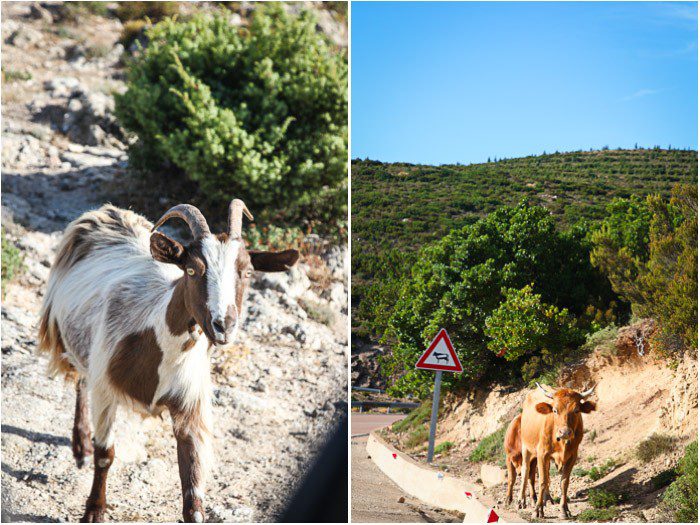
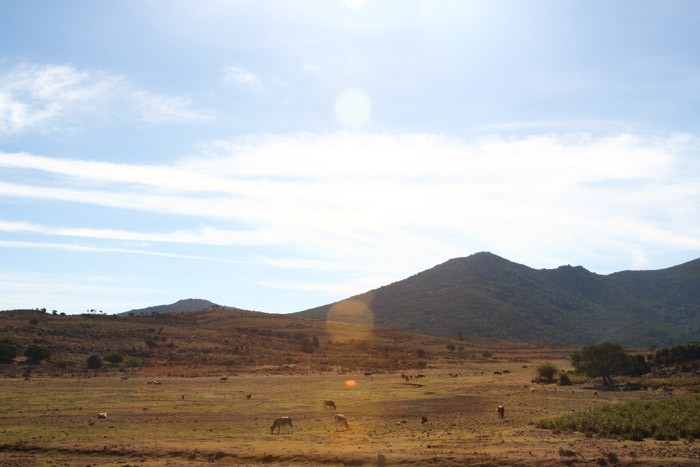
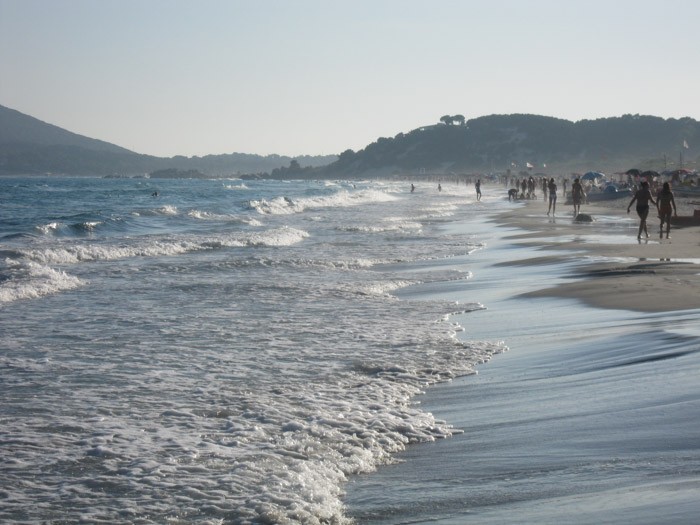
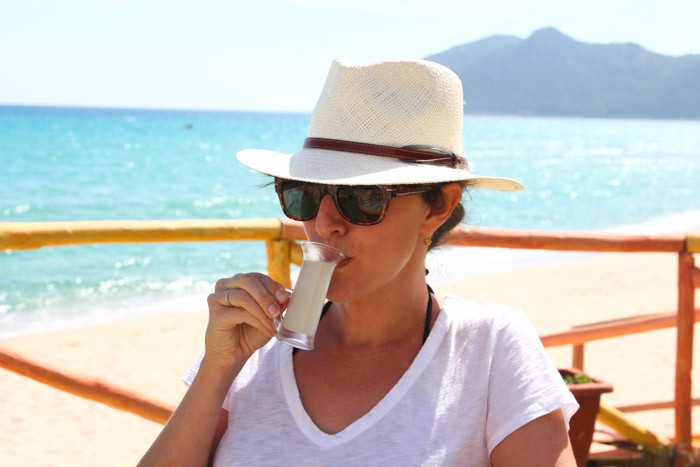
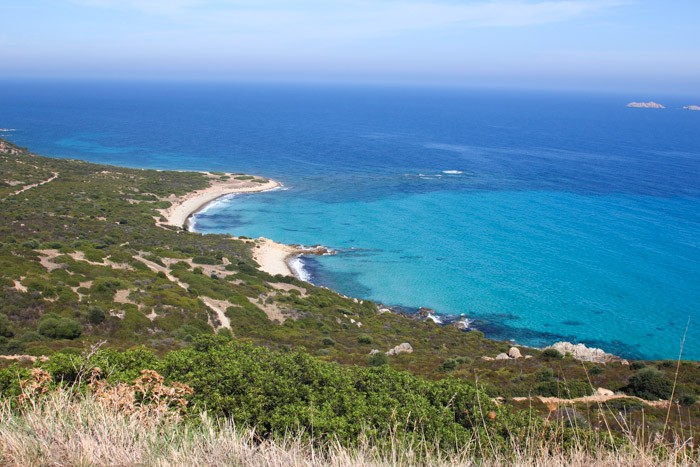

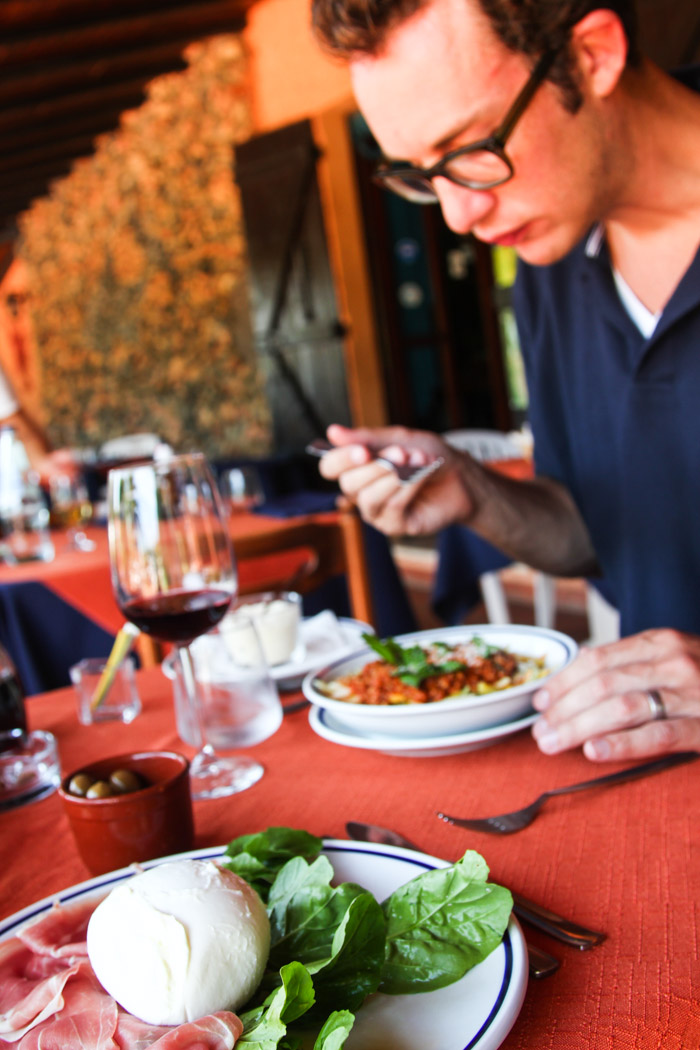
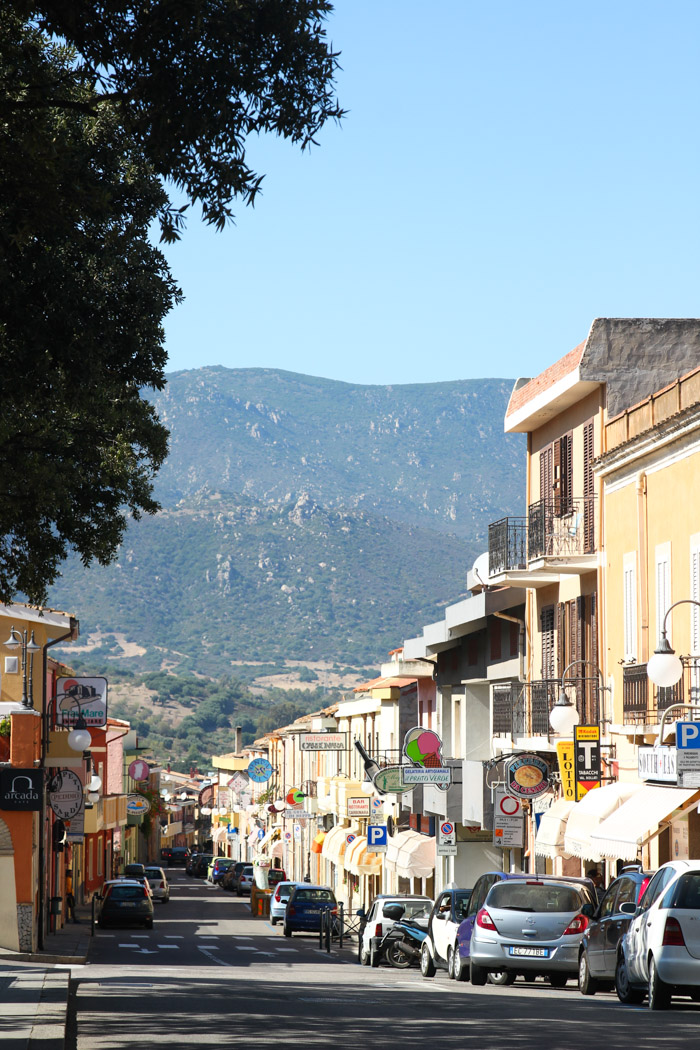
We dropped off our things and drove down the main road in town to the first beach, La Spiaggia di Simius. The scene was much different than the one we’d left in Cala Gonone and we were a little disappointed at first, I have to admit: the water, while lovely, was quite rough and the beach is much wider, with resort after resort lining up chairs and umbrellas. We walked confidently over to one such set and laid out our towels (which nobody seemed to mind this late in the afternoon). The people-watching was pretty great and Aron and I strolled up and down the sand to take in our fill.
I think, in retrospect, a little more planning would have helped here. Villasimius has many, many beaches. Some, like Spiaggia di Simius are large, but there are others where we could have enjoyed a more off-the-beaten-path swim. In fact, the next day, after reading about all of the options, we chose La Spiaggia di Campu Longu as it was touted as being sheltered from the wind.
Still, we left happily salty from the sea-air, sand underfoot (only to quickly rinse off at the hotel) and headed out to explore the town. Once again we passed groups of chatty old men and wondered “What are they excitedly chatting about?” (Old men are not typically the most talkative demographic–in my experience.)
The town was clearly a vacation-destination for Italians. The downside of this is a high concentration of t-shirt and souvenir shops; the upside was that there were also lots of interesting shops showcasing regional specialties. We of course tended to linger in the epicurean variety, picking over jars of honey in search of the bitter kind, tasting torrone and inquiring after saba. There was Bottarga (Sardinian caviar) in its many forms, all kinds of almond cookies, and wine shops offering tastes of Cannonau and Mirto (a liqueur made from the myrtle berries typical to the region). We had photographed and brought along pages from Sweet Myrtle and Bitter Honey, that detailed for which specialties we should be on the lookout.
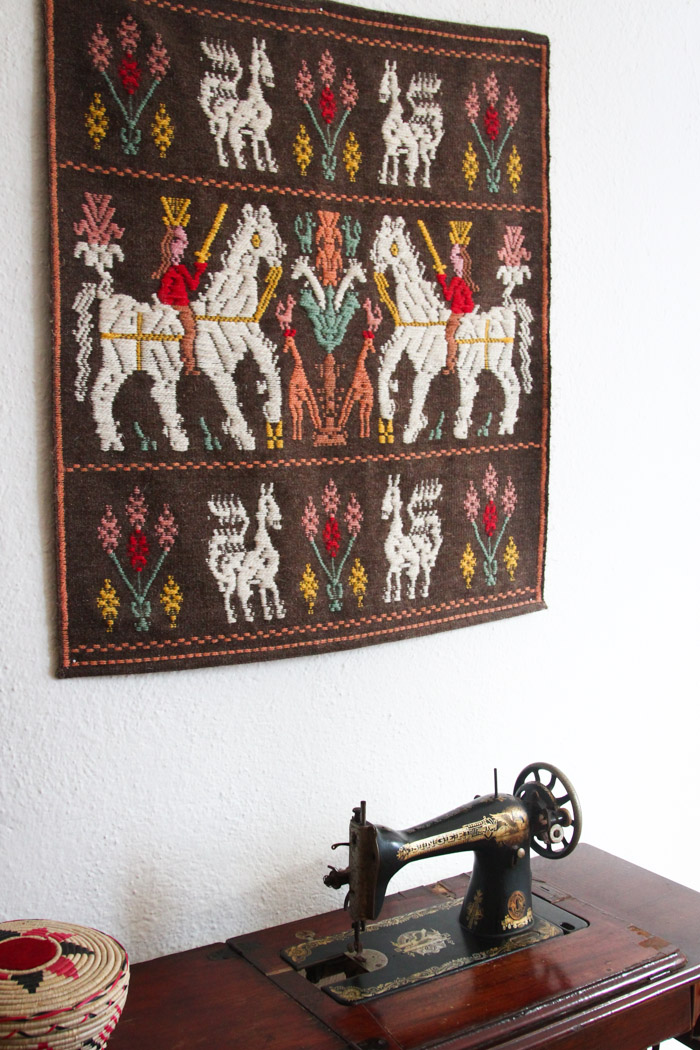
I only glanced inside some of the many shops selling woven rugs, as we certainly weren’t in the market for a rug–but I regret not bringing back more images. I took one photo: there was a small example hung from the wall of our hotel. In general, I found the color combinations and relief patterns to be really pleasing and striking.
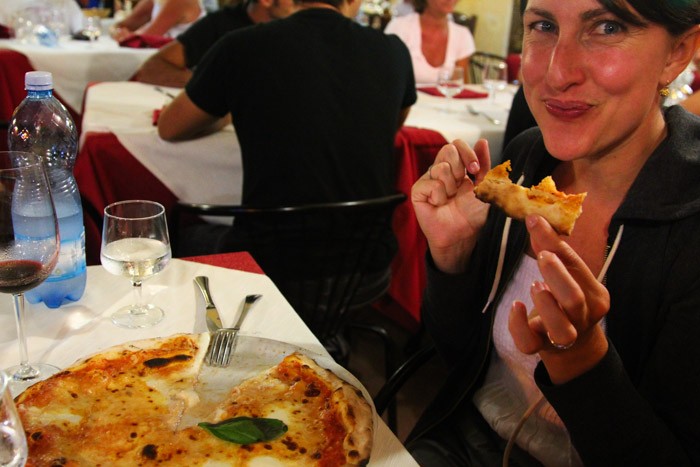
Aron and I agreed that we we were in the mood to try some pizza and inquired in a bookstore as to the shop owner’s favorite spot. Hotel Acquarius’ outdoor courtyard was filled to the brim and people were stopping by to pick-up takeout. (Good signs!) Aron ordered an appetizer of Bottarga over cheese–the mullet roe came salted and pressed into long, flat, orange pieces as well as grated. He thought it had the flavor of a mild caviar, but the texture of salumi. I thought the pizza would be considered excellent by most standards, but I have to be honest: I’ve had better in New York! That opinion–which we shared–of course did not prevent us from polishing off the entire pie.
After dinner, we strolled and appreciated the warm night, stopping before long to eat again when we split a nutella crepe.
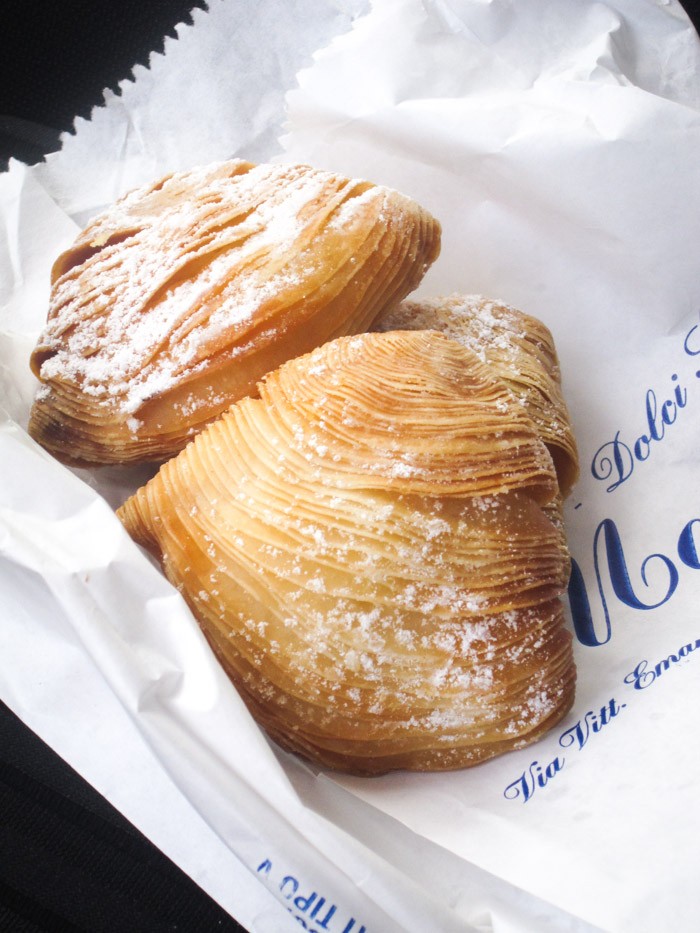
The next morning was cloudy; it was the first day we woke to anything but sunshine but I would be lying if I said I didn’t whine even a little bit. Still, the weather was more than comfortable enough for a day at the beach, and the wind had dissipated, so we packed up everything except our beach gear and deposited our things with the hotel. They offered us seats for breakfast and we had some croissants and cappucinos before heading for the water.
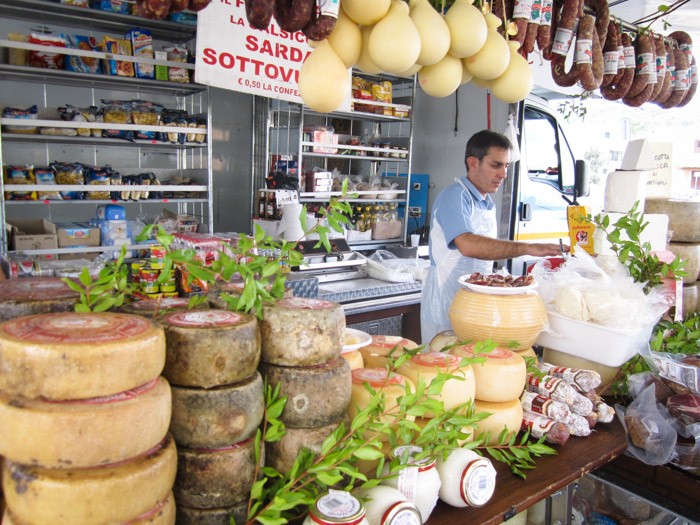
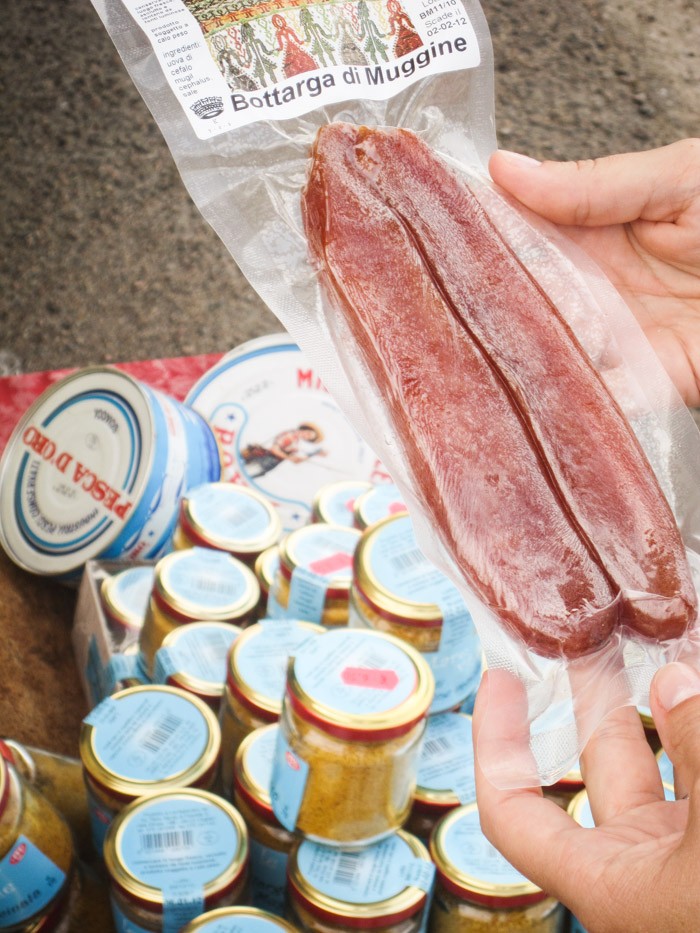
On our way out of town to find Campu Longu, we passed by a weekend market and decided we had to pull over. The very first stand was a cheese and sausage vendor–with some stacks of pane carasau and bottarga, too, of course. Aron spotted a sign with the words “Casa Marzu” followed by some small print that seemed to say something about its sale being impermissible. We weren’t exactly sure what it said, but we recognized the name immediately.
Casa Marzu is the infamous Sardinian rotten cheese, perhaps colloquially known as “maggot cheese.” The sheep’s milk cheese is allowed to decompose with the aid of cheese flies who deposit larvae (maggots) in the cheese. They digest the cheese, breaking it down and making it very soft. Ewwwh! Our friend had told us about it before we left and Aron–the intrepid eater–figured he would have to try it if it crossed his path. The cheese has been outlawed, though we had been told that most cheese purveyors would probably have a wheel behind the counter. We hadn’t, however, actively sought out the cheese. But this sign seemed as much an advertisement as a notice of prohibited sale.
We pointed to the sign and asked the woman behind the counter if she sold the cheese. In true black market fashion, she gave a sideways head nod to her coworker and went to tell him–we assume–that there were two people asking about the Casa Marzu. He came over, pulled out a plastic bin, leaned back from it (to avoid the stench? or the exiting flies?), and lifted its lid. Out he pulled a wheel with a disintegrated center–just as we’d seen in pictures. He offered us the whole wheel, but Aron requested his smallest slice.
Not sure exactly what we were in for, we left with a double-wrapped, plastic takeaway container of something resembling cheese–staying just a while longer at the market to admire the cork plates for sale.
Finding Campu Longu beach required some sleuthing. We drove along the coast, by the harbour where we thought we’d find the sand, and found ourselves a bit lost within a campsite. Back out on the road, we were finding that most roads out to the sea were marked private. But then there was the one public road that lead to one small public lot and a tiny alley fringed with bougainvillea leading to the sea. What we found at its end was a beautiful, small bay overlooked by the very hotel we had first gone in search of!
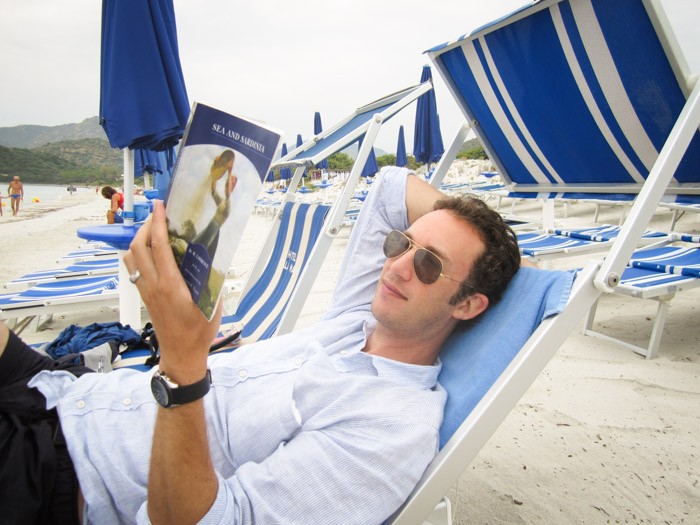
We paid a small fee to rent two chairs from the hotel and headed straight to the water for some snorkeling. The water, as before, was cool at first, but felt lovely with a little time. There wasn’t too much to see–but a few schools of fish took interest in us, and we took our time looking around one large outcropping that sat in the shallow bay.
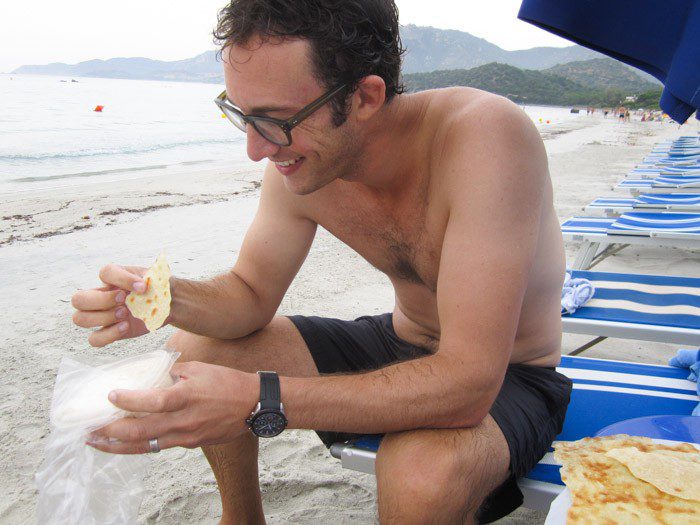

Back at our chairs, Aron pulled out the Casa Marzu and some bread. The smell of the cheese seemed to hit him first. I held up the camera to catch his reaction, which seemed to contain a mix of disbelief and laughter. There were, indeed, lots of tiny wriggling white maggots in the cheese. (Blech!) Apparently, if the larvae are alive, the cheese is good; but eating the larvae themselves poses some risks to your intestine.
Working carefully, with pursed lips, Aron pushed aside the little buggers and cobbled together, I’d guess, about a teaspoon. Down the hatch! He noted that he did a lot of chewing in case he’d missed any.
I loved the series of expressions that followed. His verdict: rotten cheese. Like, really rotten, stinky cheese. I tried about a tenth of what he had and I can confirm: not terrible, but still rotten and stinky, ammonia-tinged cheese. Where was that wine?
We felt a little bad throwing the rest away in the hotel’s trash, but there was no way this stuff was coming back to the car.
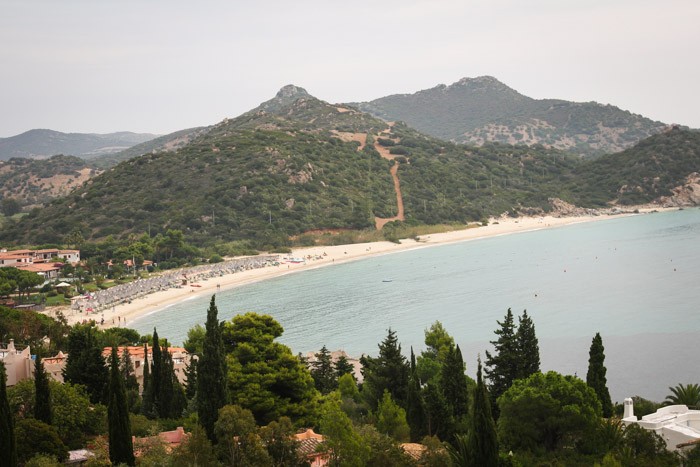
After another hour or so, our all-too-short time at the lovely beach had to come to an end. We wanted to be sure we would have some time to explore the capital-city of Cagliari. After swinging back by the hotel to pick up our bags, we drove back out to the coast and followed its turns. Aron and I both agreed that the Villasimius area would be a perfect getaway from mainland Europe. From Cagliari’s airport, it’s just a short drive to the resort area. One could rent a home overlooking the turquoise waters, ancient Nuraghe in the distance, and spend the days moving from one beautiful beach to the next. The one we’d chosen for our second day was so shallow and calm, it would be a perfect spot for families with young children. And it would be nice, in all cases of these beachside destinations, to have more time to explore the museums and for appreciating the cultural opportunities and land-based natural sights the region held.
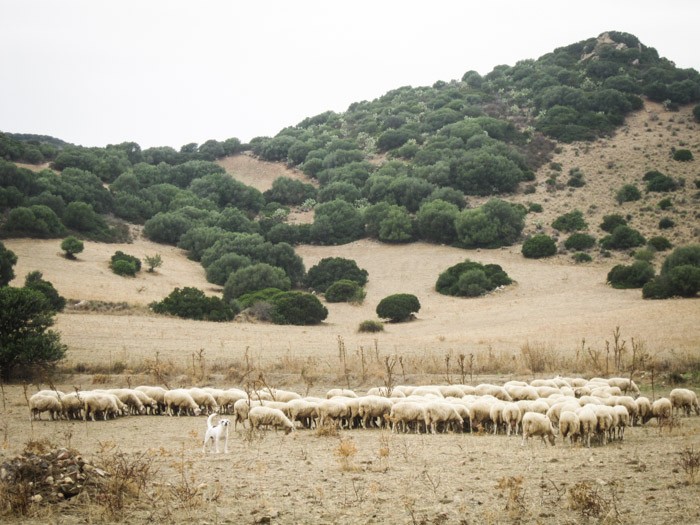
The costal drive back to Cagliari was also lovely, though we did wish the sun were shining. Once we passed through the less-than-picturesque industrial areas on the outskirts of Cagliari–about an hour later–and arrived in the center of town, we both expressed excitement over being back in an Italian city (we really do love cities). Unfortunately, we soon learned that we had been silly not to book a room when we had the chance. Aron pulled up to hotel after hotel, and I would run up to ask after a room. At each place I learned it was booked solid.
We pulled up to the tourist office and (still to my surprise) we learned that indeed the town’s rooms were all full! I explained that we had an early flight and didn’t want to stay far–perhaps we could stay near the airport and drive back into town for dinner? She pulled out the “Guida Bed & Breakfast” and dialed Deiana Antonio in the village of Elmas. For 50 euro he would be happy to host us. Phew!
We weren’t sure exactly what to expect, and though Elmas seemed nice (without nothing t0 belie
its airport proximity), we were a little hesitant when we pulled up to a culdesac of high-rise apartment buildings. Antonio, with his pipe, calmly strolled over and pointed us to his gate, which led to a small house behind the towers. He was friendly and apologized that he would not be up early enough to make us breakfast. He showed us our room, an ornate bedroom with two of the tiniest single beds I’ve ever seen, and then he smiled at Aron (all 6-feet-7-inches of him) and shrugged. We chatted for a little while, rinsed off in the shower, and then dashed back to town.
We found parking, once again, on a sidewalk by the port. We inquired about fees at a newspaper stand (where tickets are sold), but were told that the sidewalk is unofficial–and therefore free–parking. We walked away, crossing our fingers that we would still find our car there when we returned.
It occurred to us that dinner reservations might be tough in light of whatever was going on in town, so we made sure to swing by some of top picks and inquire along our tour of the city.
The first two were booked, but multiple sources had recommended Antica Hostaria–so we made reservations there for 8:30 and then climbed up to the Castello neighborhood to wander through its narrow, medieval lanes.
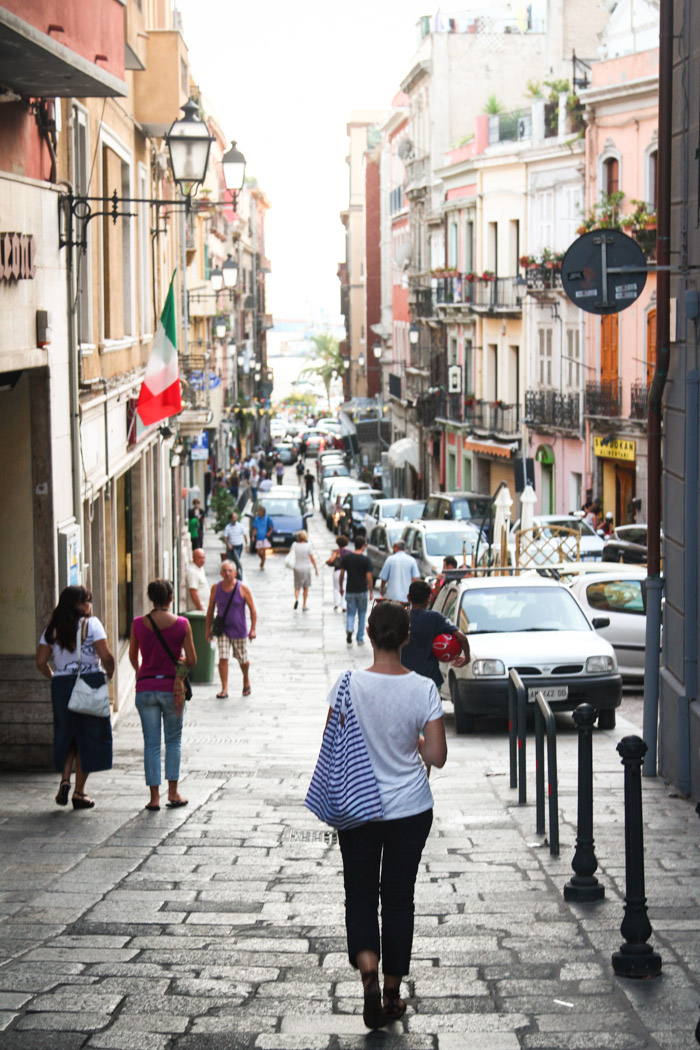
Cagliari emerged as a city around the 6th century BC, so it has a nice mix of the old and the new (though most of its notable old sites date more to the 16th-18th centuries), but it is most of all a bustling port. From its old citadel, you can look out at the working shipyards as well as over the red-roofed buildings that enclose piazzas and churches and cosmopolitan shopping streets.
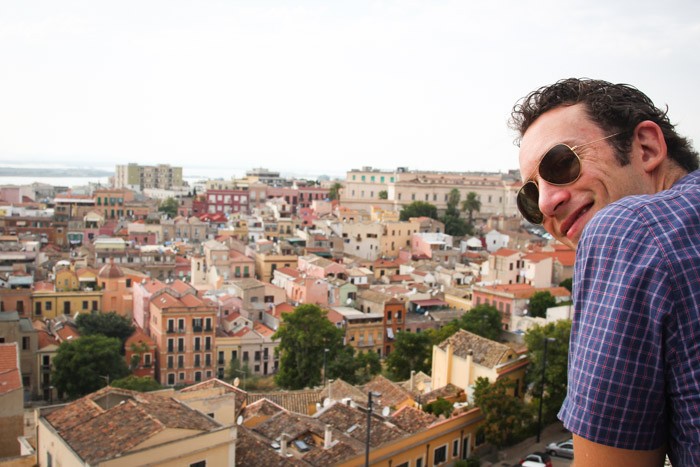
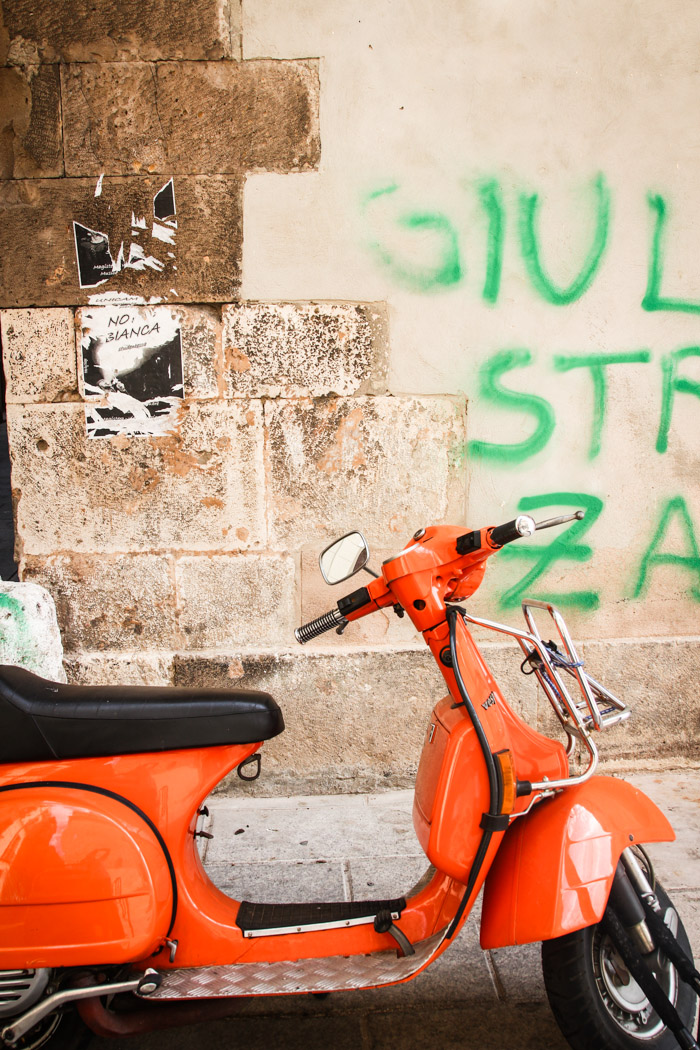
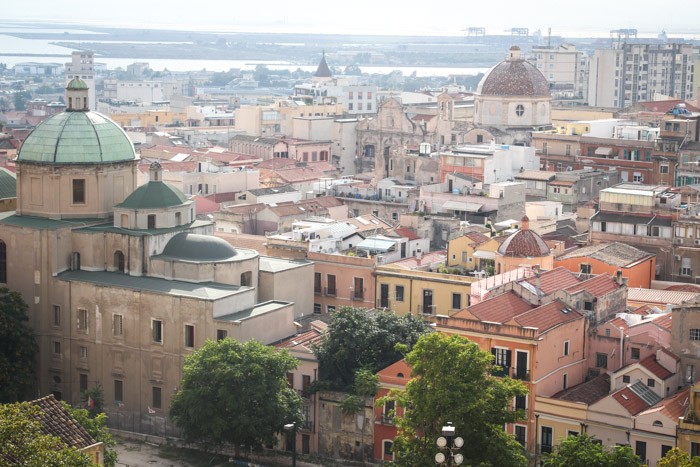
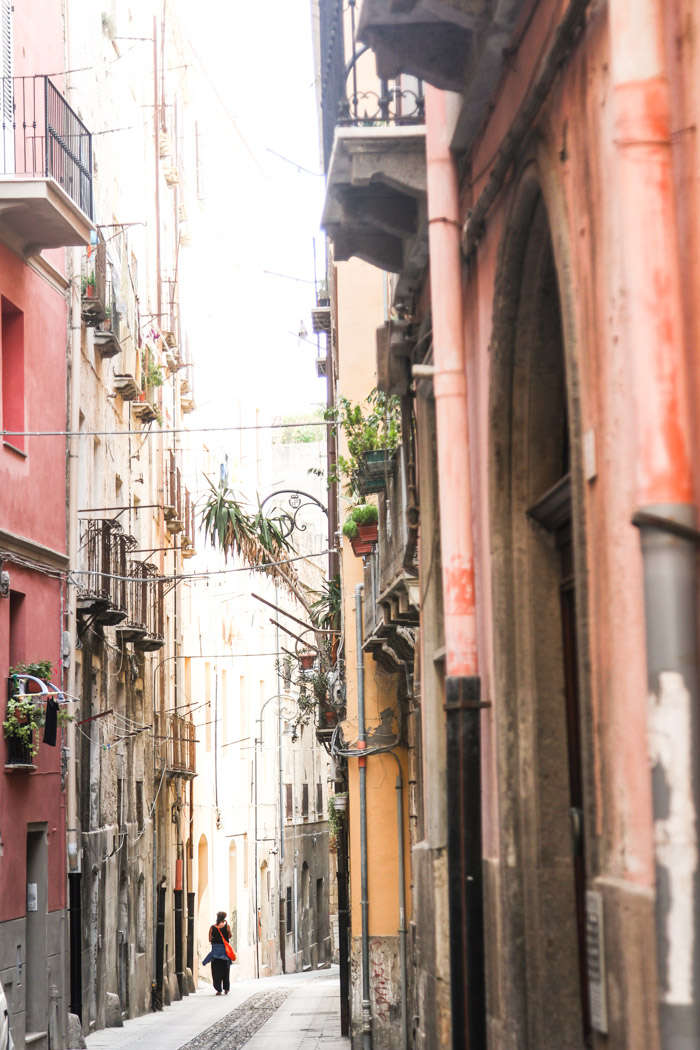
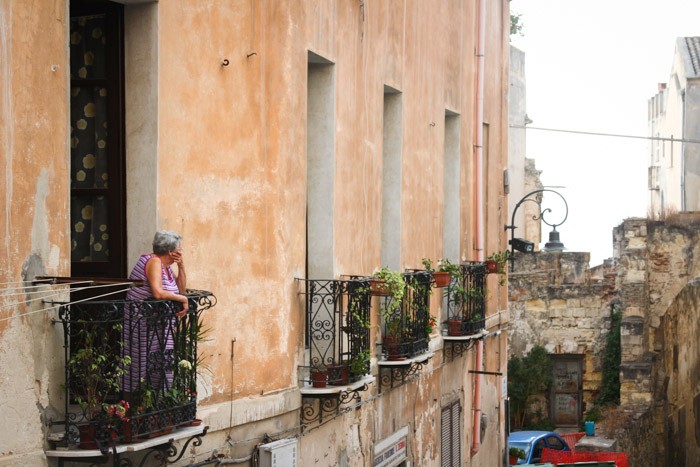
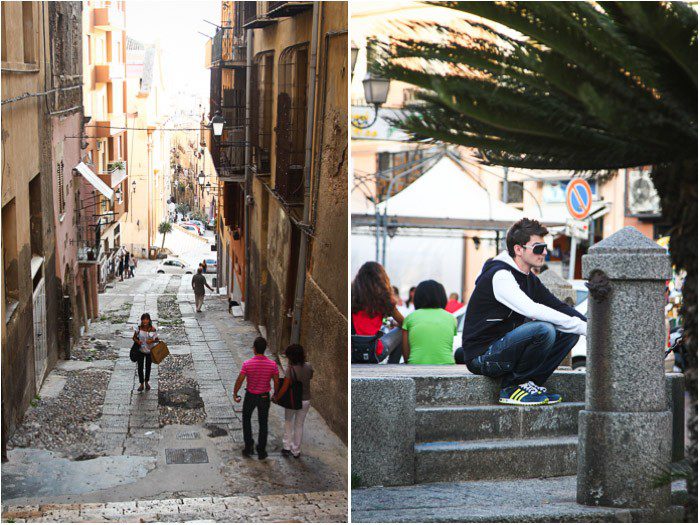
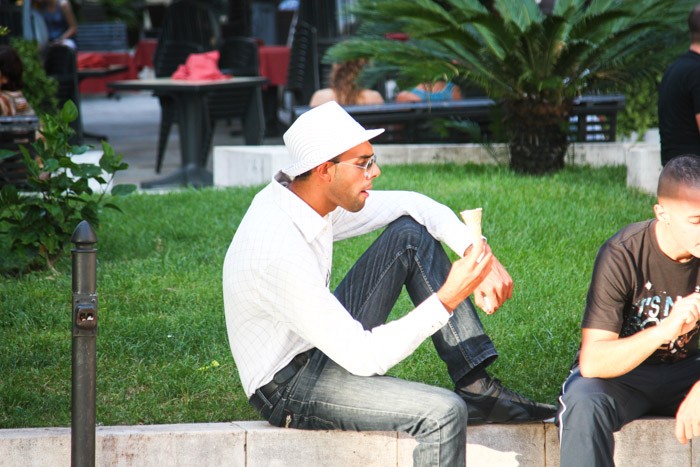
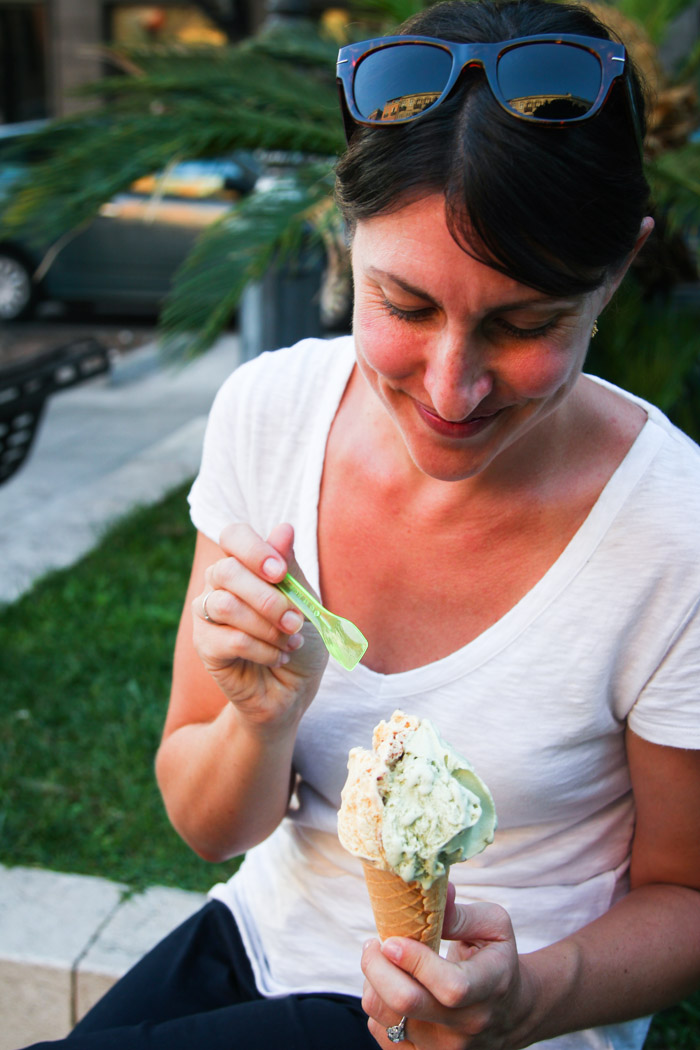
After a few hours atop the citadel, we made our way back down to the main square, Piazza Yenne–which begins the Carlo Felice highway–and sampled the reputed-favorite gelato spot, L’Isola Del Gelato.
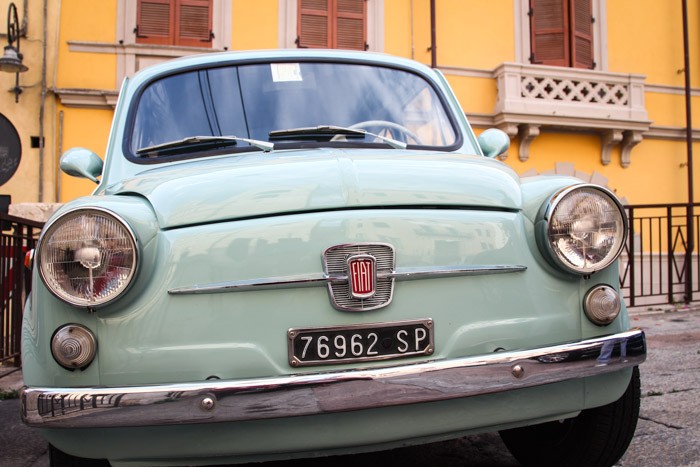
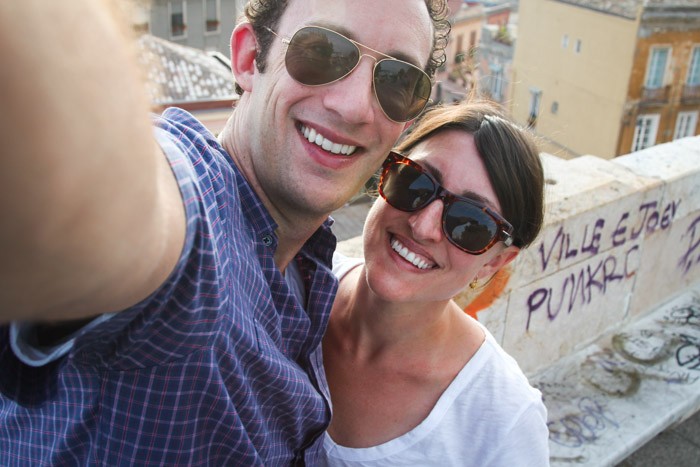
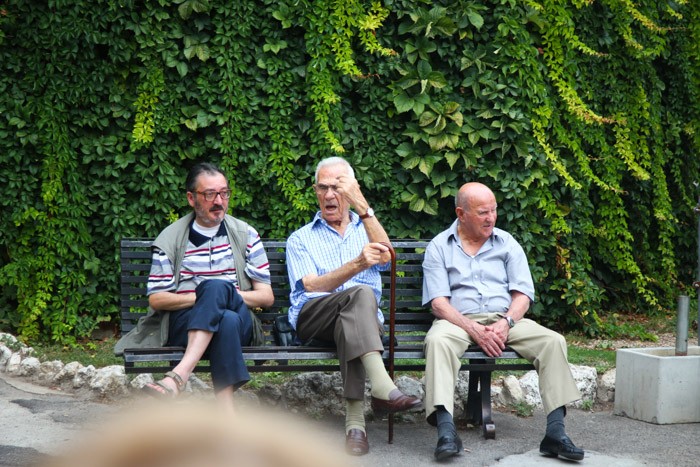
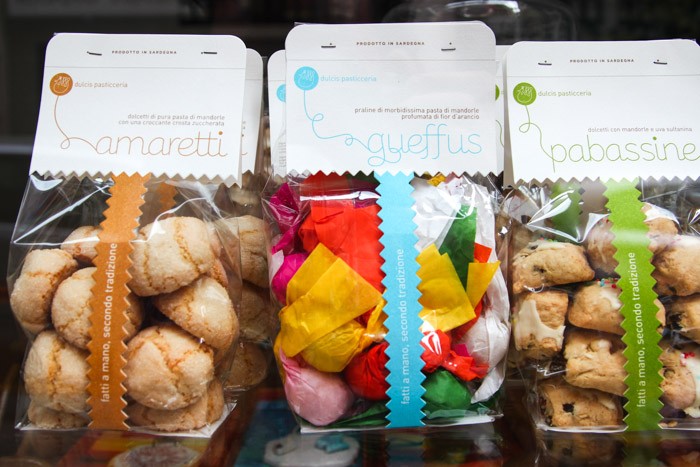
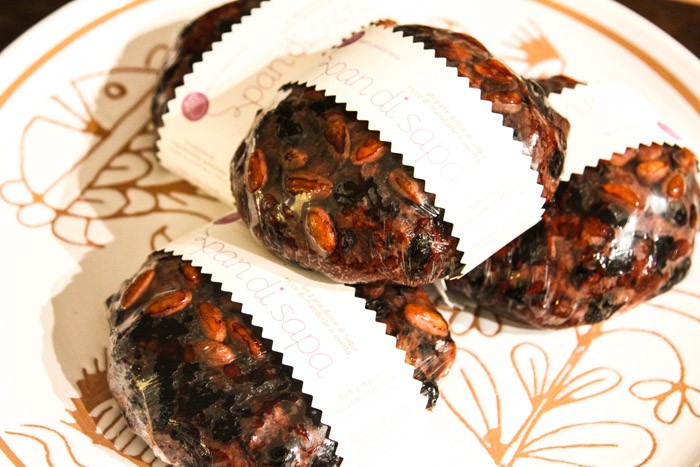

The streets were crowded, even as shops were just reopening from the afternoon siesta. I admired some shoes, but we still spent most of our time exploring local delicacies. A favorite spot was Bottega Sarda on Via Baylle. They offered us samples of everything that interested us, and we were drawn to their beautiful packaging. I brought back some delicious lemon-peel/almond confections to share with colleagues, and we picked out some additional bottles of wine to carry home. I had already chosen a bar of Torrone for myself, but the boxes here were so pretty that it was hard to resist another.


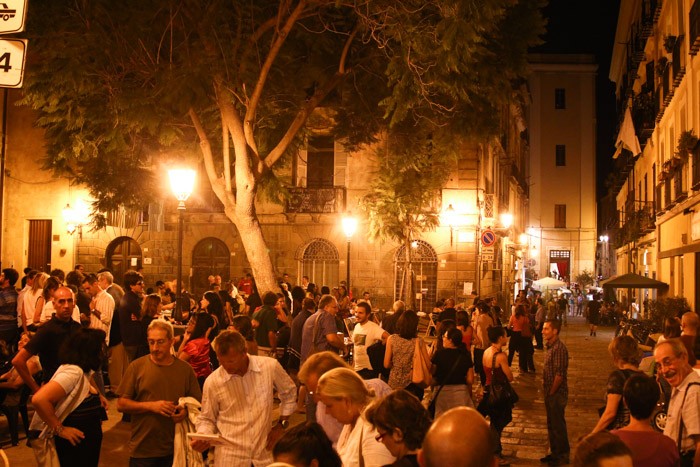
After an unsuccessful flight-check-in attempt in a small internet cafe, we settled on a spot for one drink, then settled on a second for a balancing espresso, and then watched the crowds amble about from open-air readings to dance performances before heading back to the restaurant.
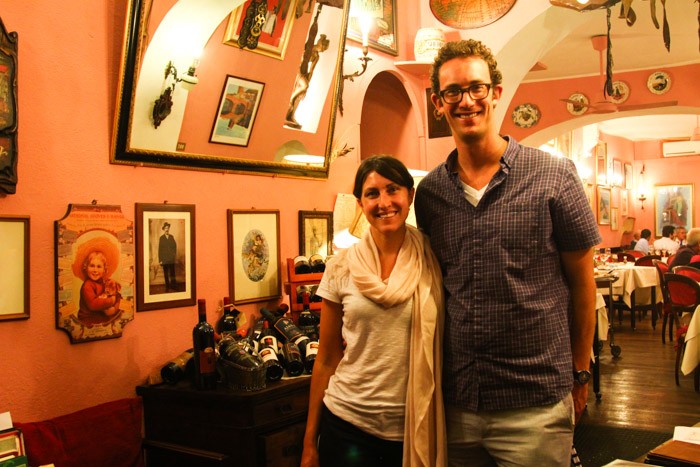
Antica Hostaria was a bit more formal than we required for the night (to be honest, we’ve decided that we tend to prefer Trattorias over ristorantes in Italy–something to keep in mind for next time), but it offered up an impressive scene of fresh fishes and a cozy room. I tried two of the specials, both featuring mushrooms (which were in season, and on display when we walked in).
After all of our pre-dinner treats, we kept the meal light–but we couldn’t pass up another order of Sebadas. The ones we had at Su Barchile were far superior, but it’s hard to go too wrong with honey, pastry dough, and cheese.
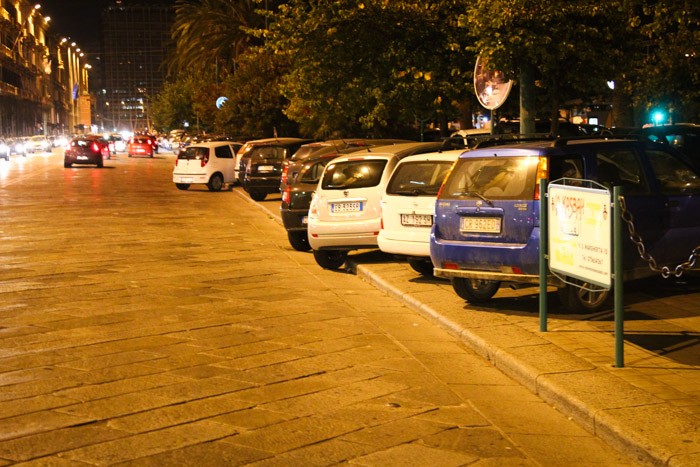
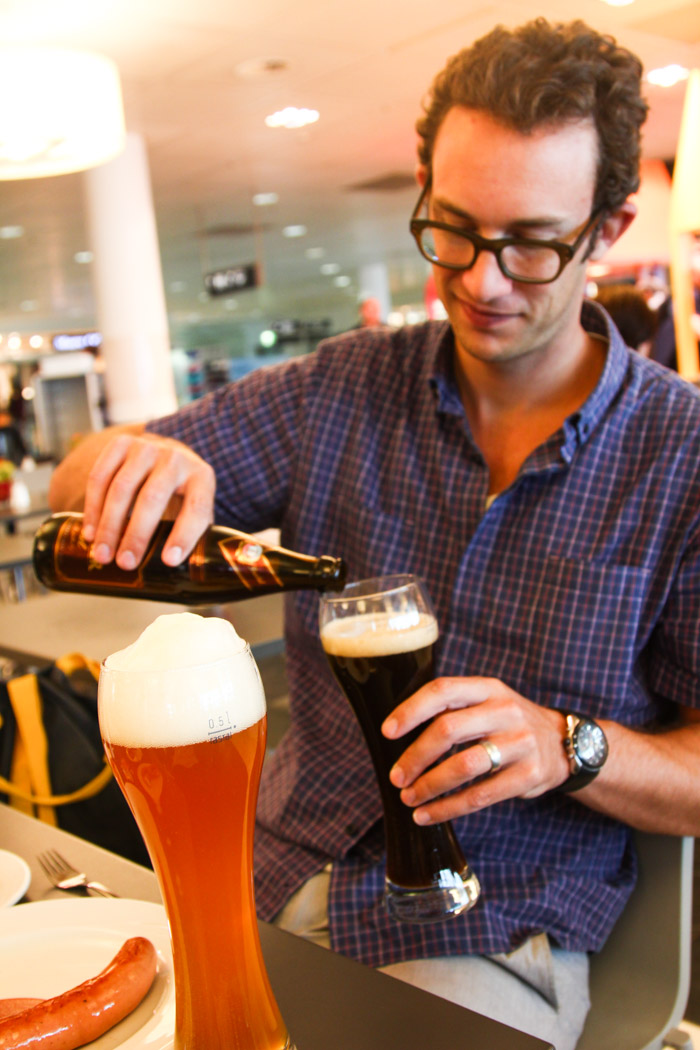
By the way, in Munich we realized that we had returned to the 200th anniversary of Oktoberfest. (Poor timing on our part; maybe we should have considered staying put?)
Fortunately, Sardinia was worth missing it: We had such a wonderful time and the crystal-clear waters lived up to and in places surpassed our expectations. I think both of us will forever look to that day that we rented a boat as the highlight; it will become the emblem of our trip. And I think in our typical fashion, we may have tried to see a bit too much and should have considered staying put once we’d found that coast of our dreams. But it’s terribly hard to find yourself in Italy and choose to visit only one beachside town. We would have wondered what else we were missing. It’s the kind of choice we will no doubt continue to struggle with on all of our trips, but it’s a struggle I’m happy to endure.



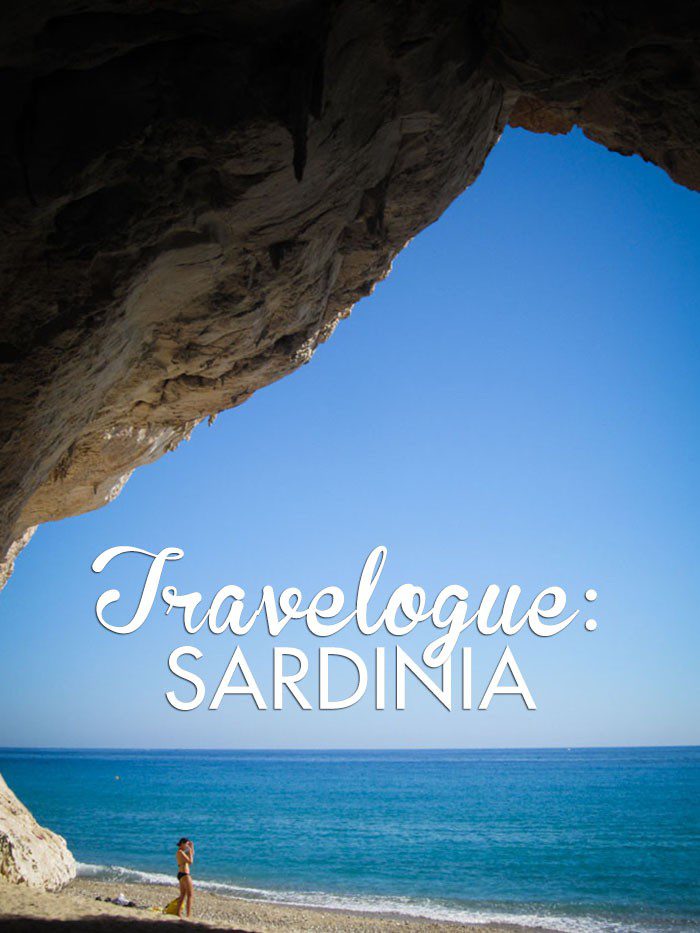
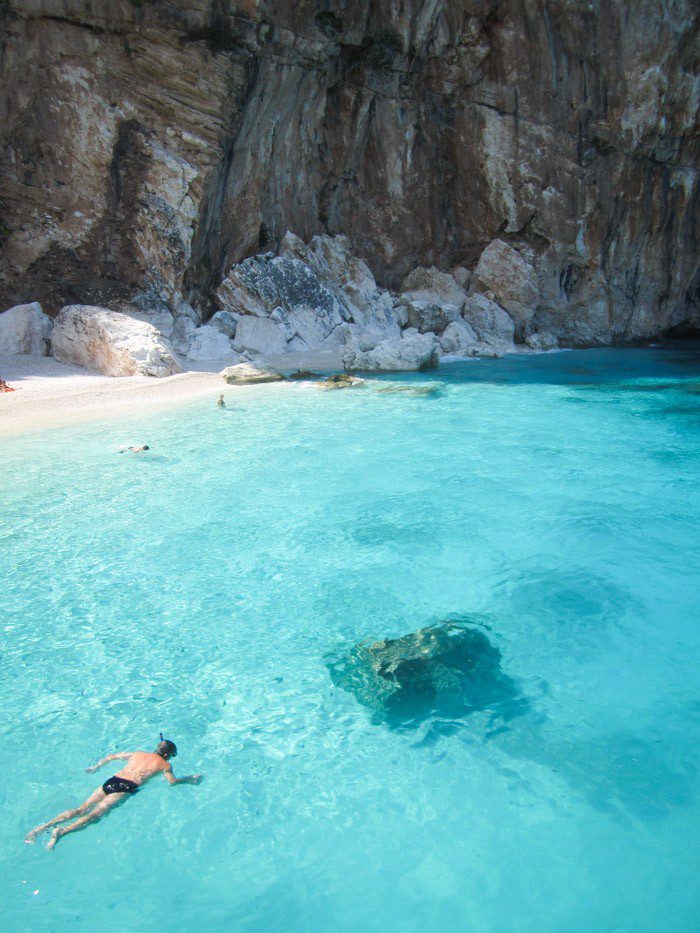
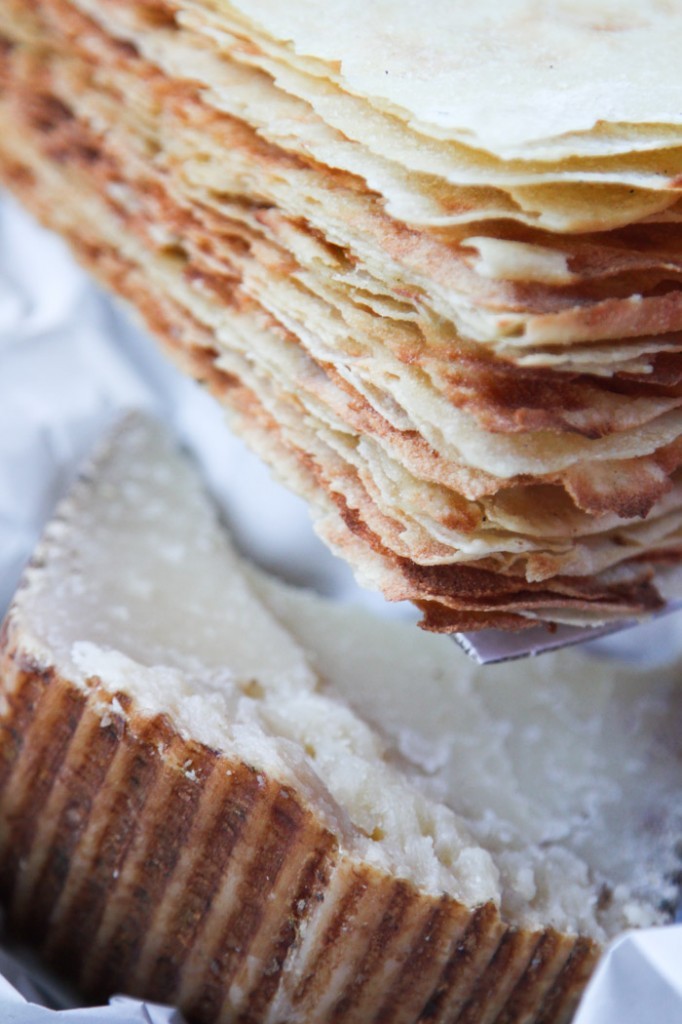
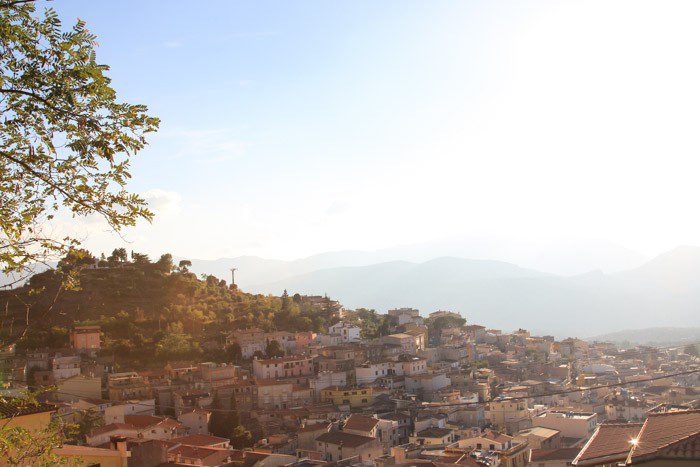
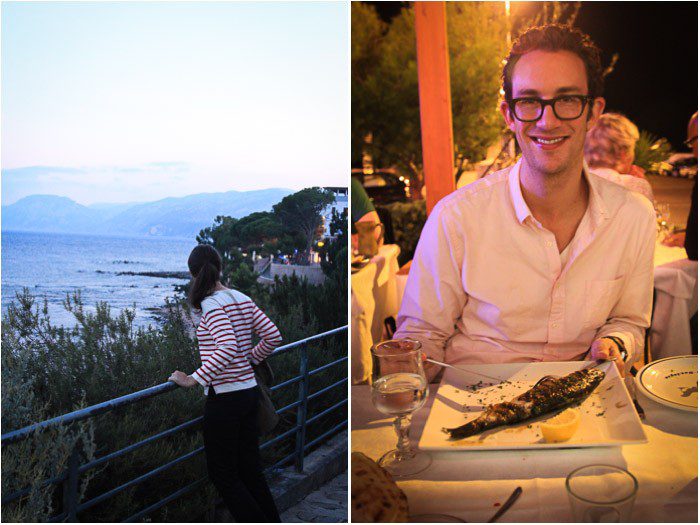
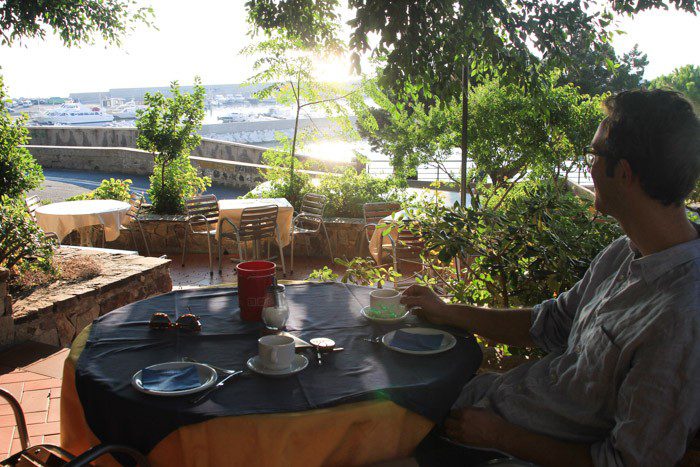
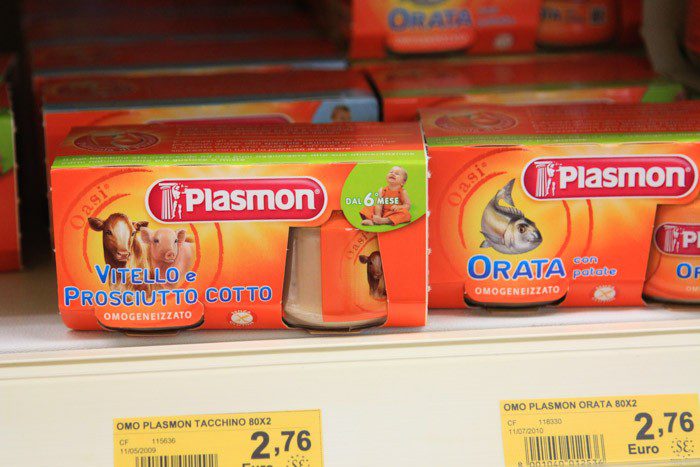
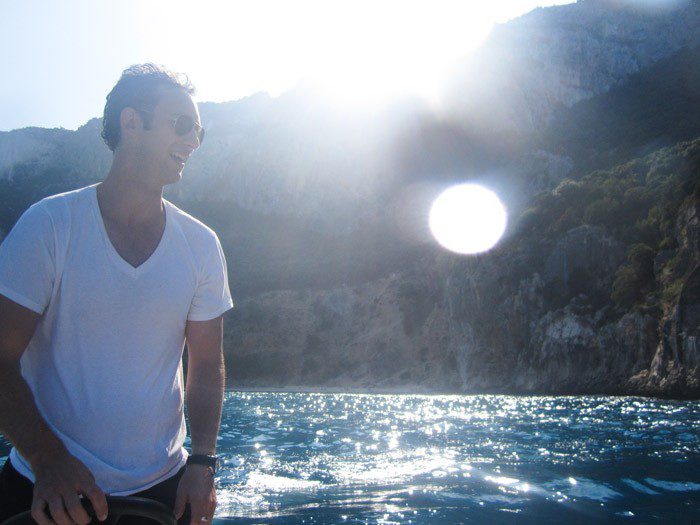
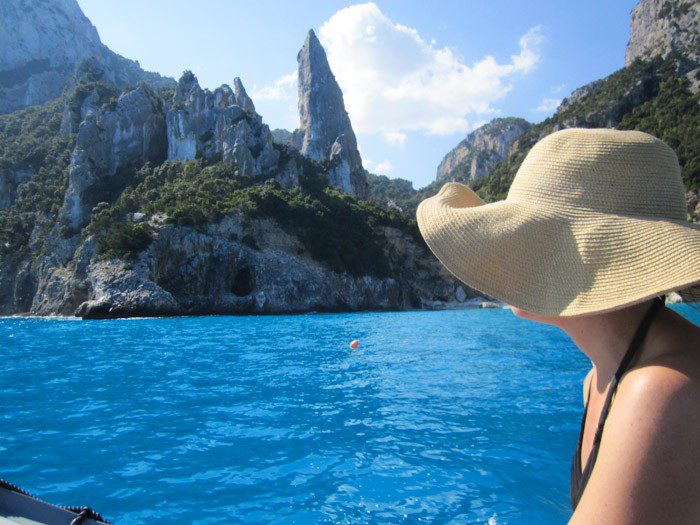
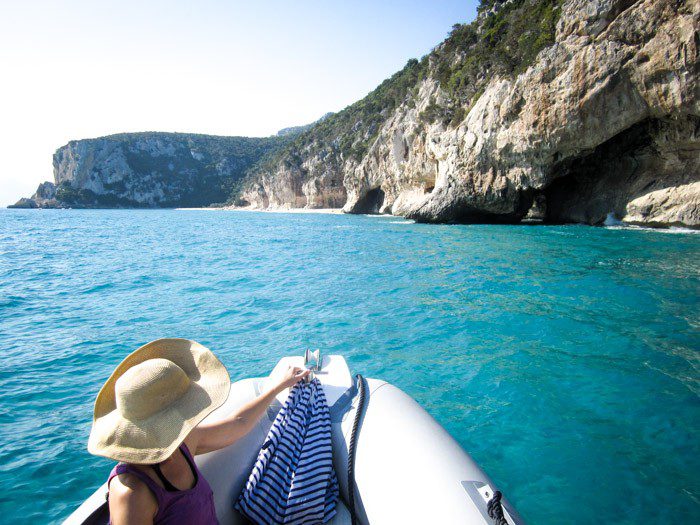
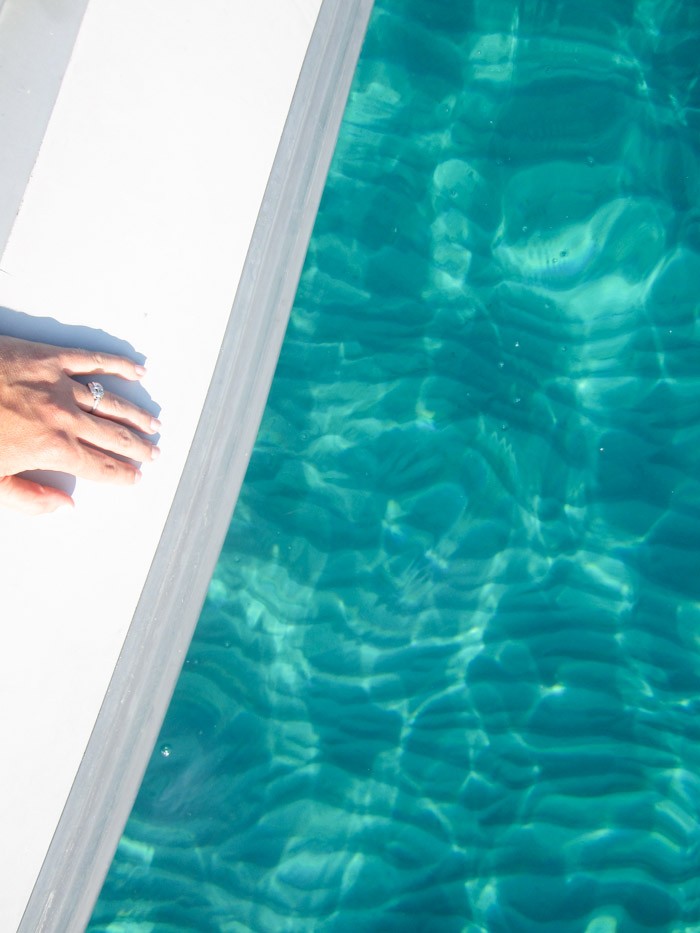
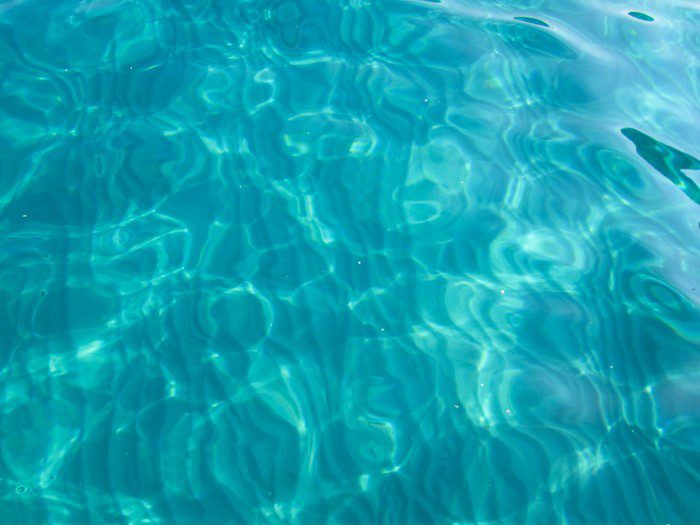
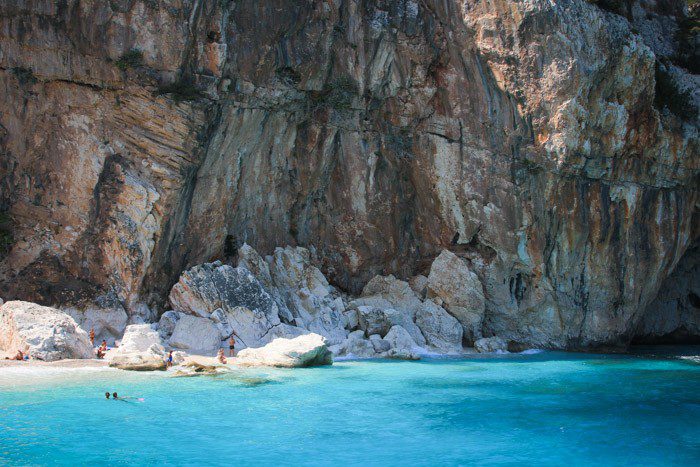
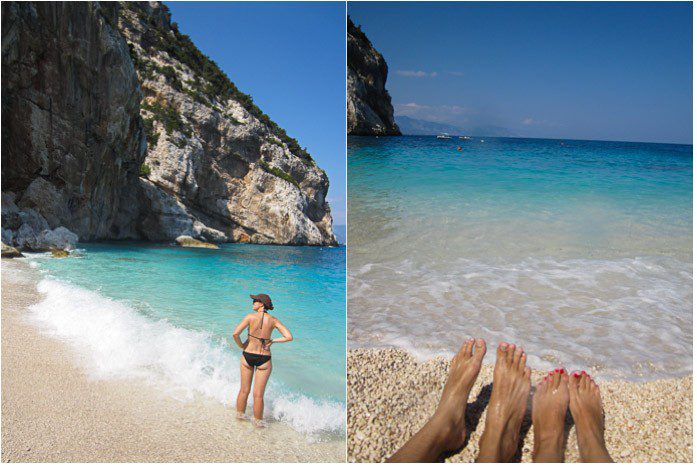
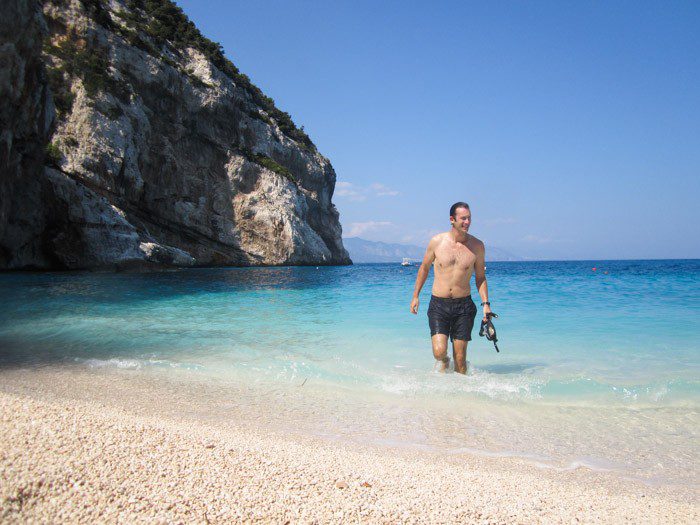
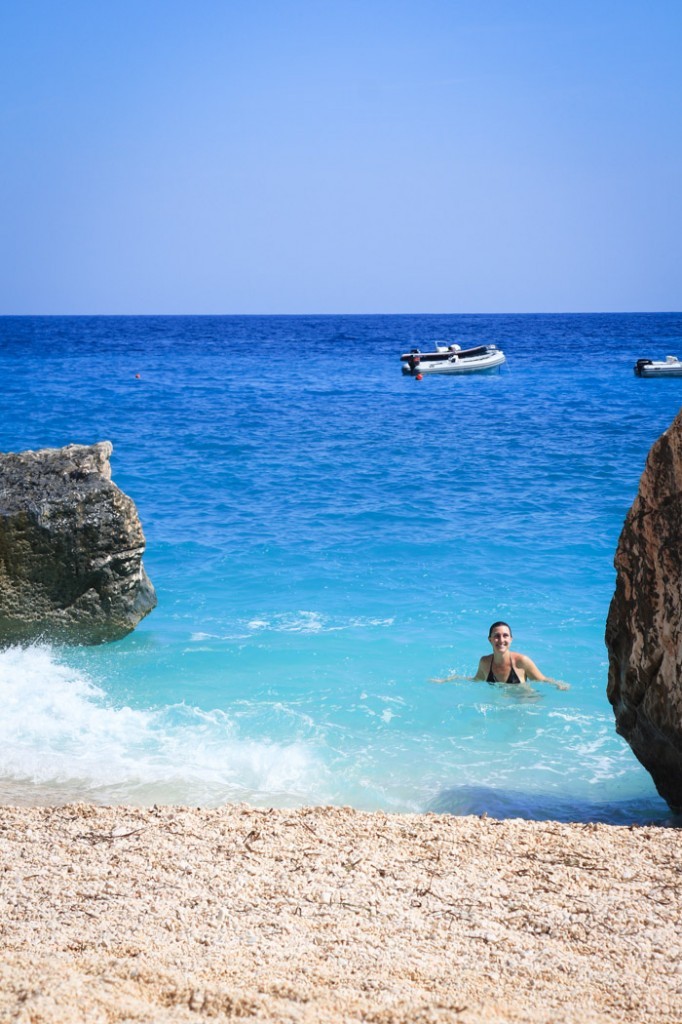
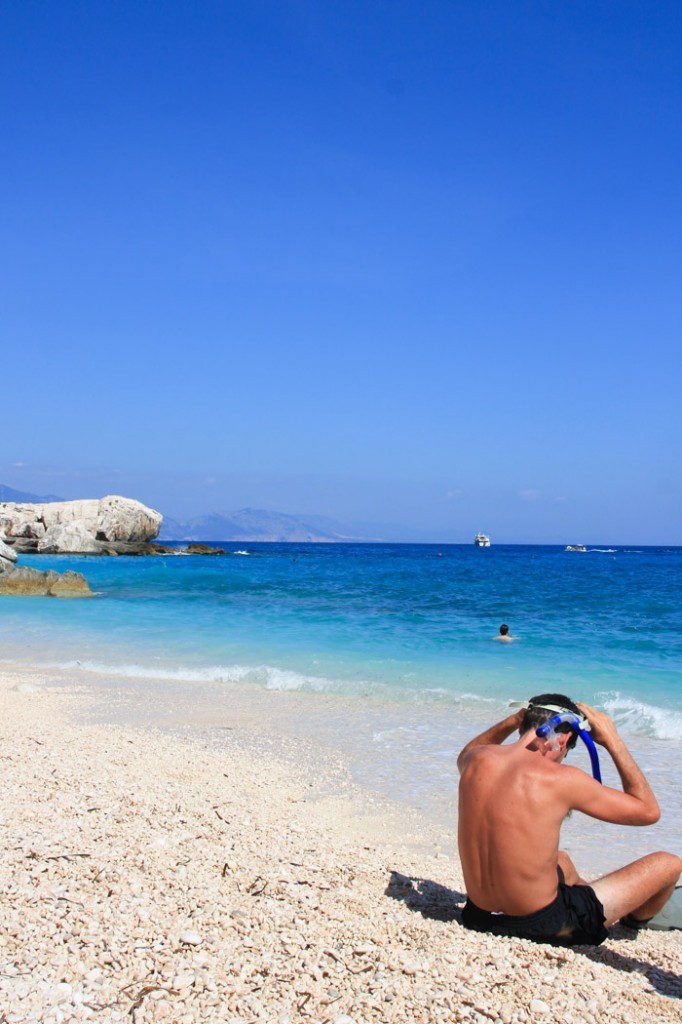
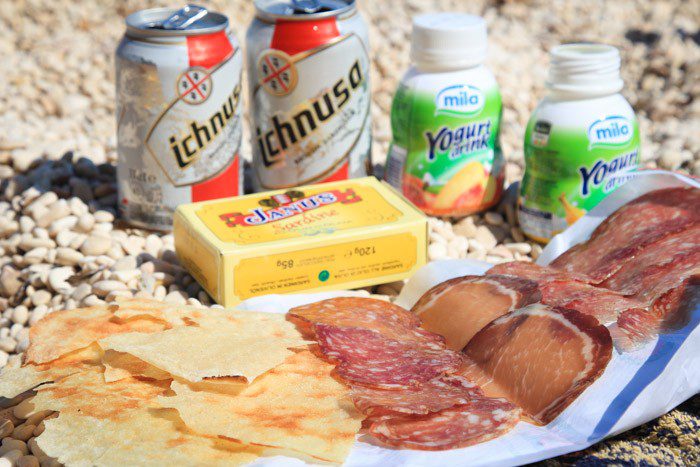
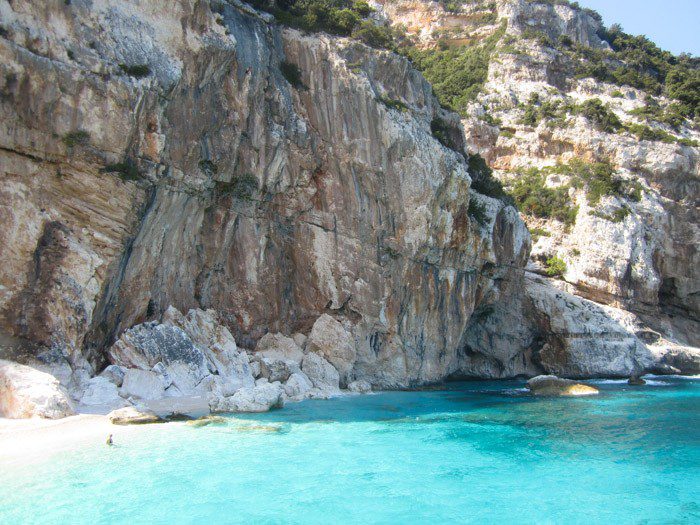
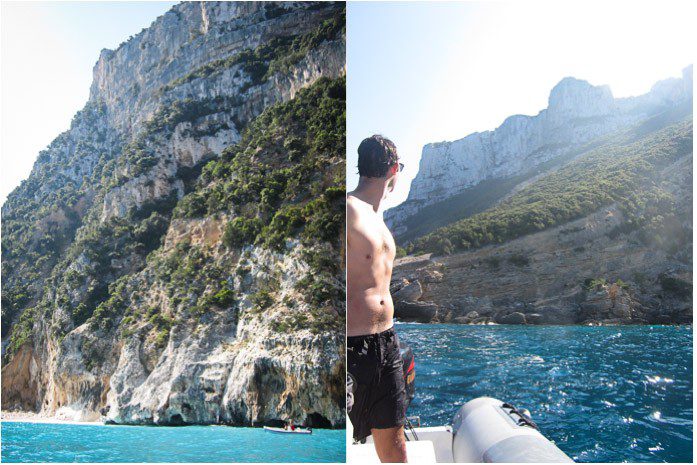
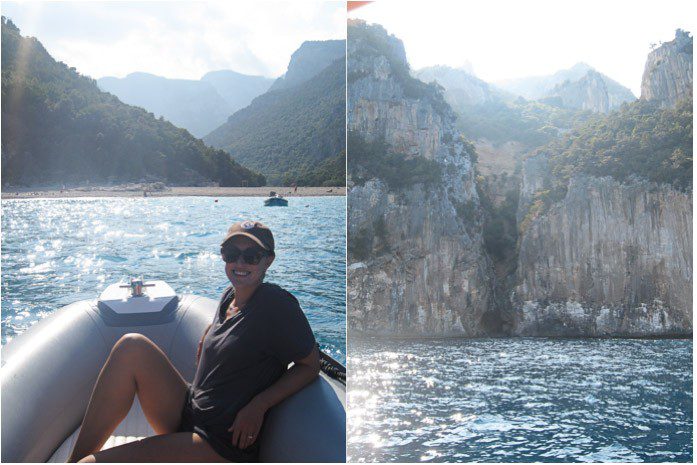
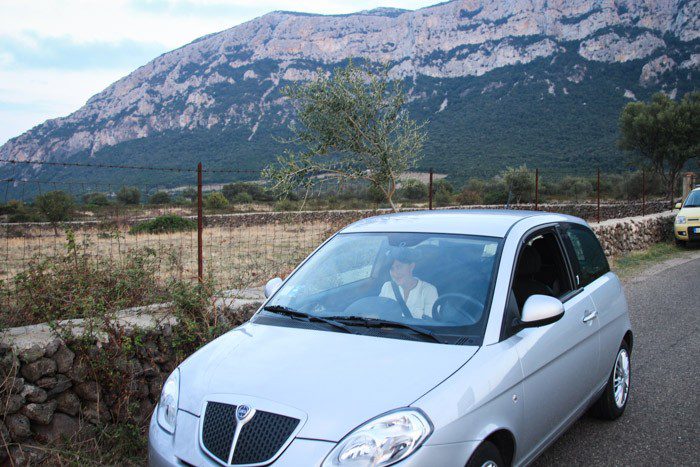
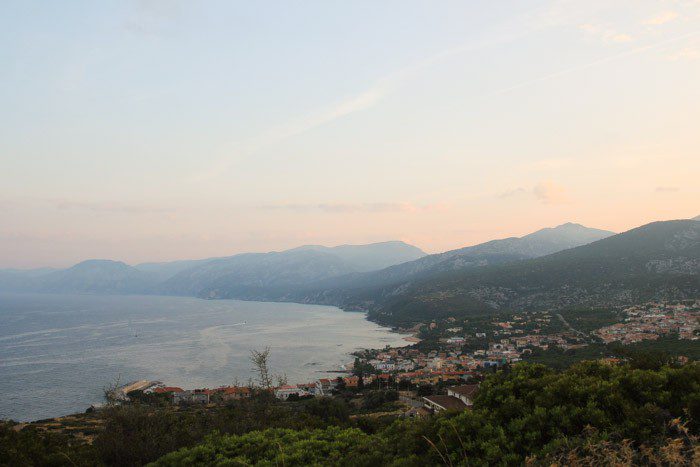
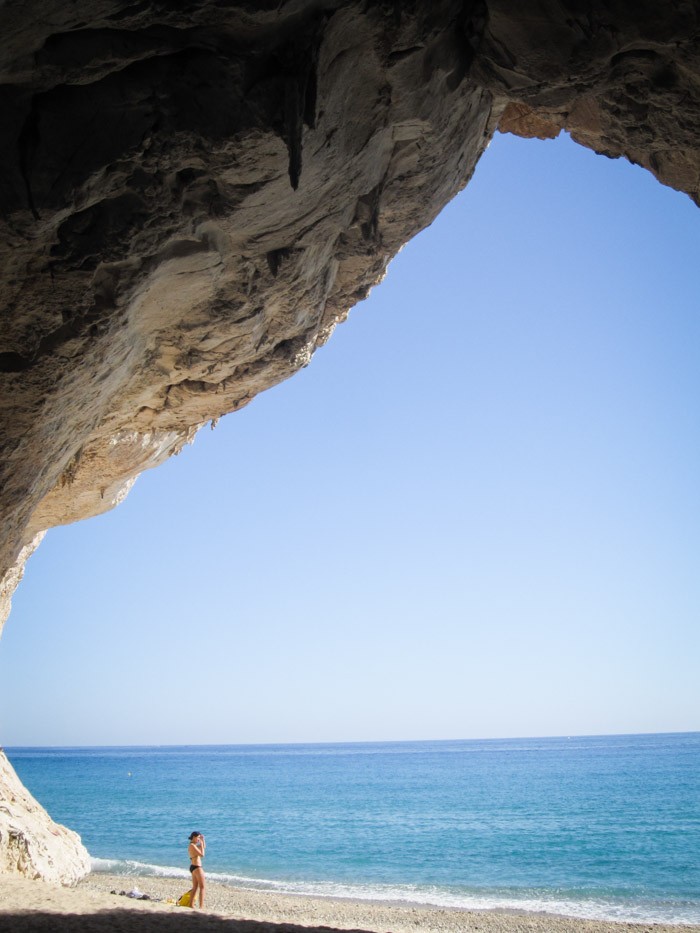
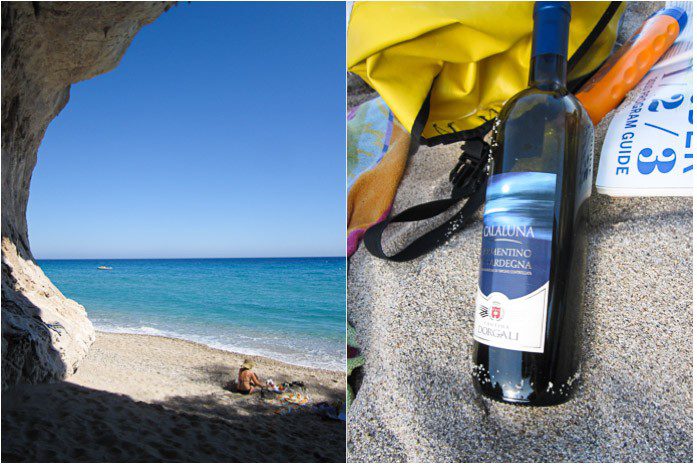
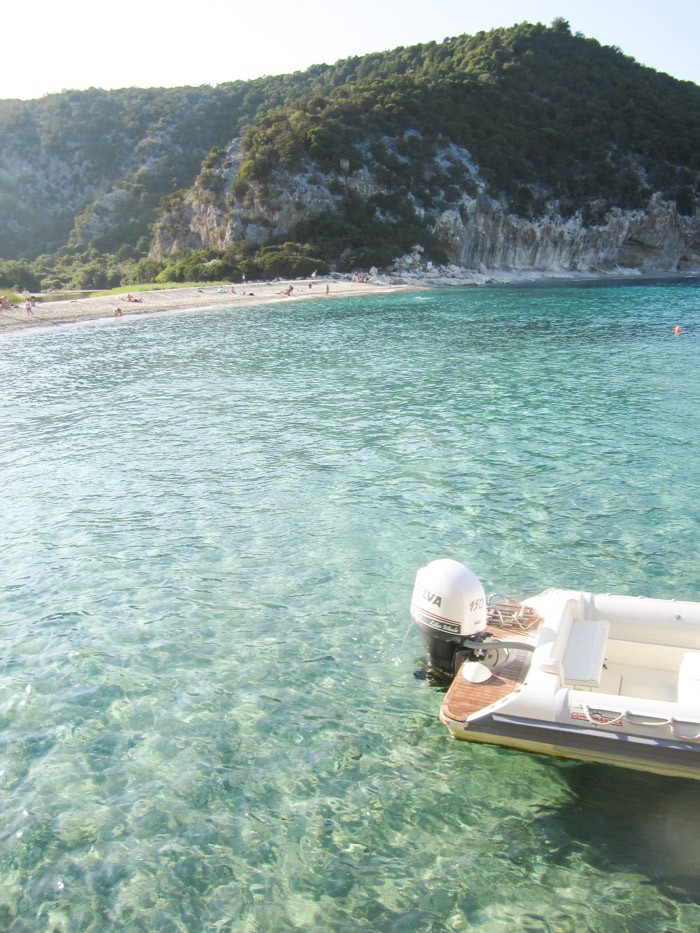
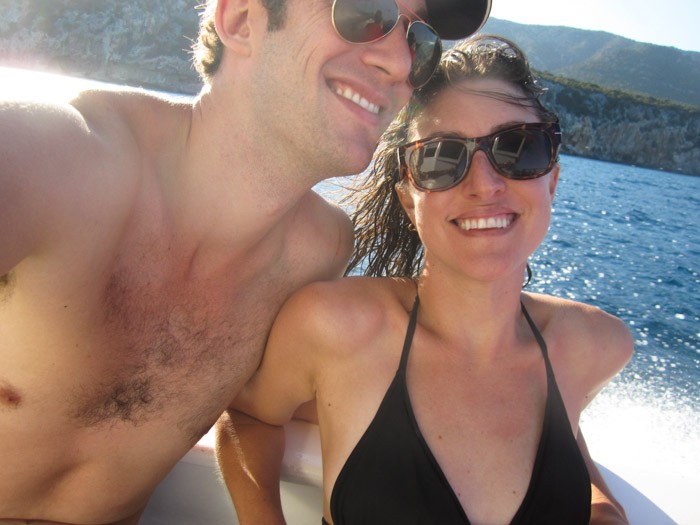
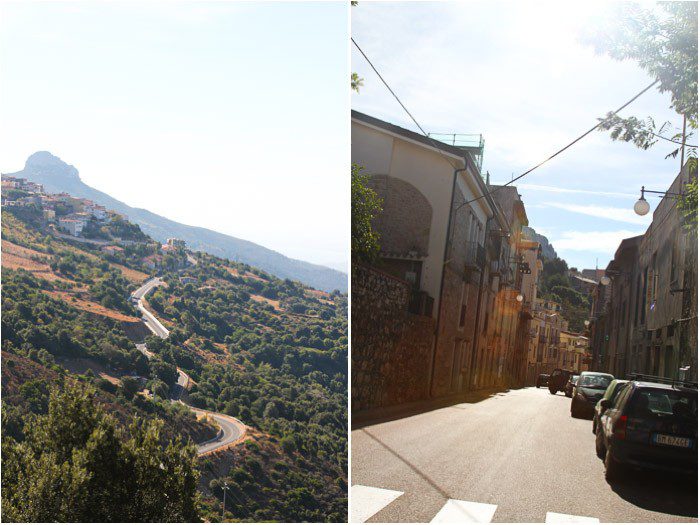
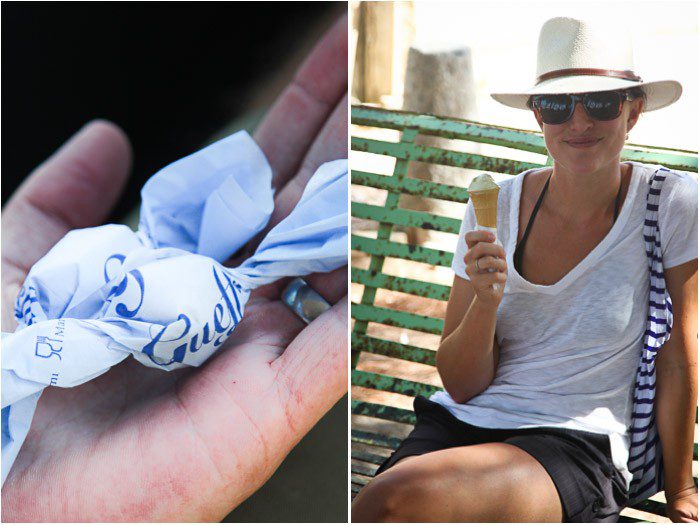
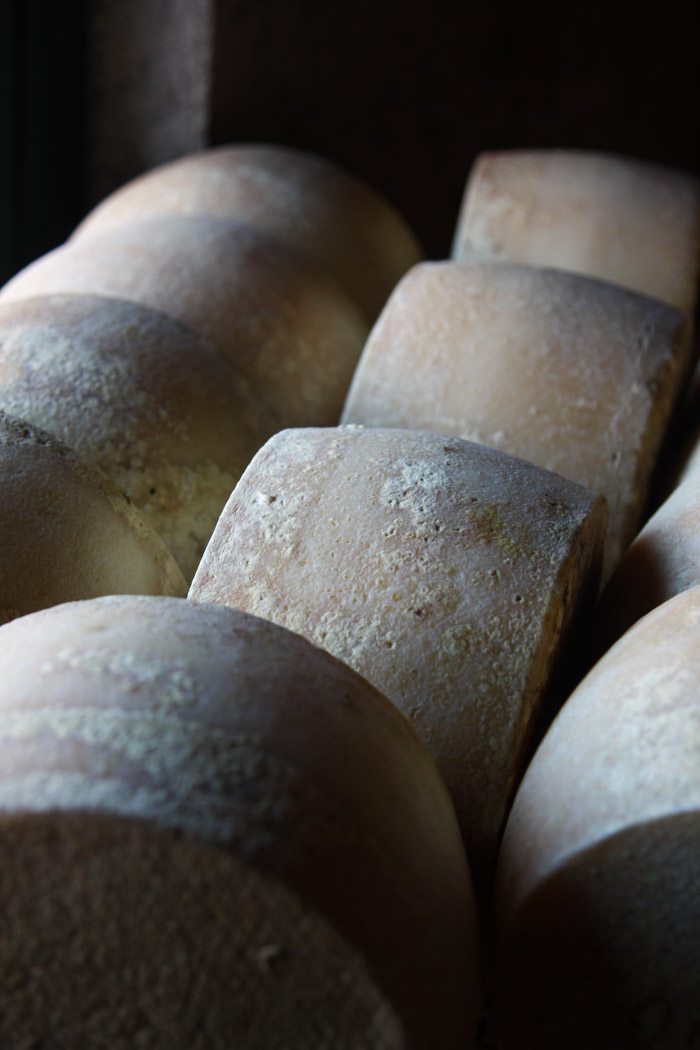
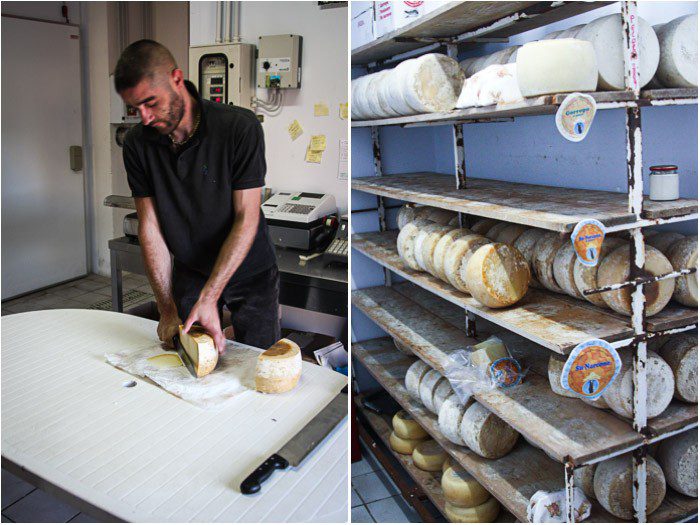
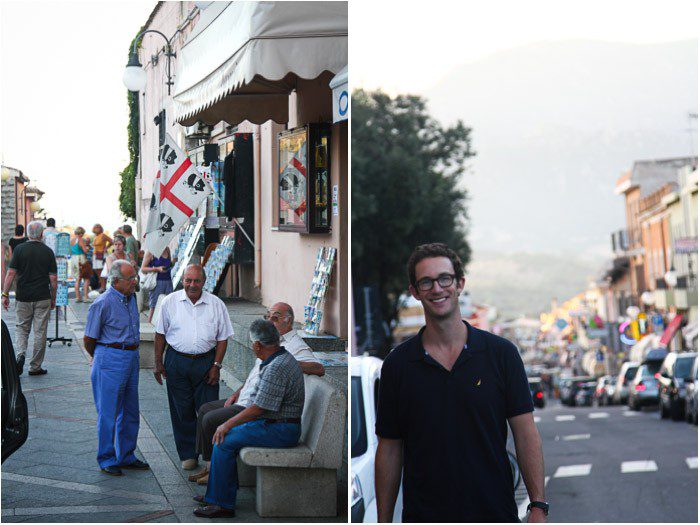
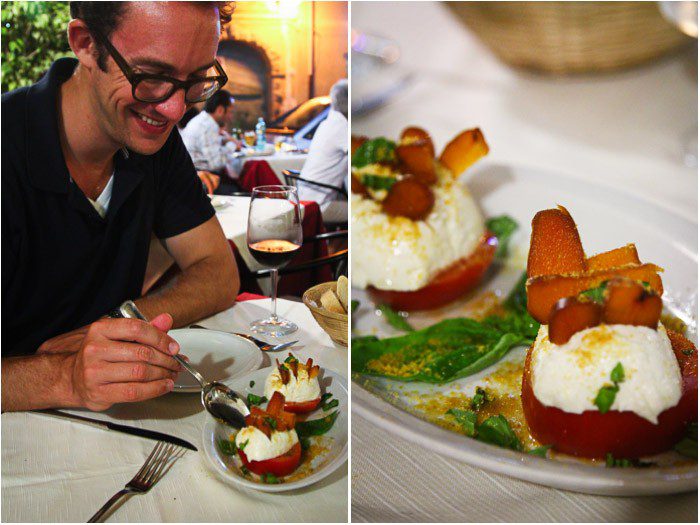
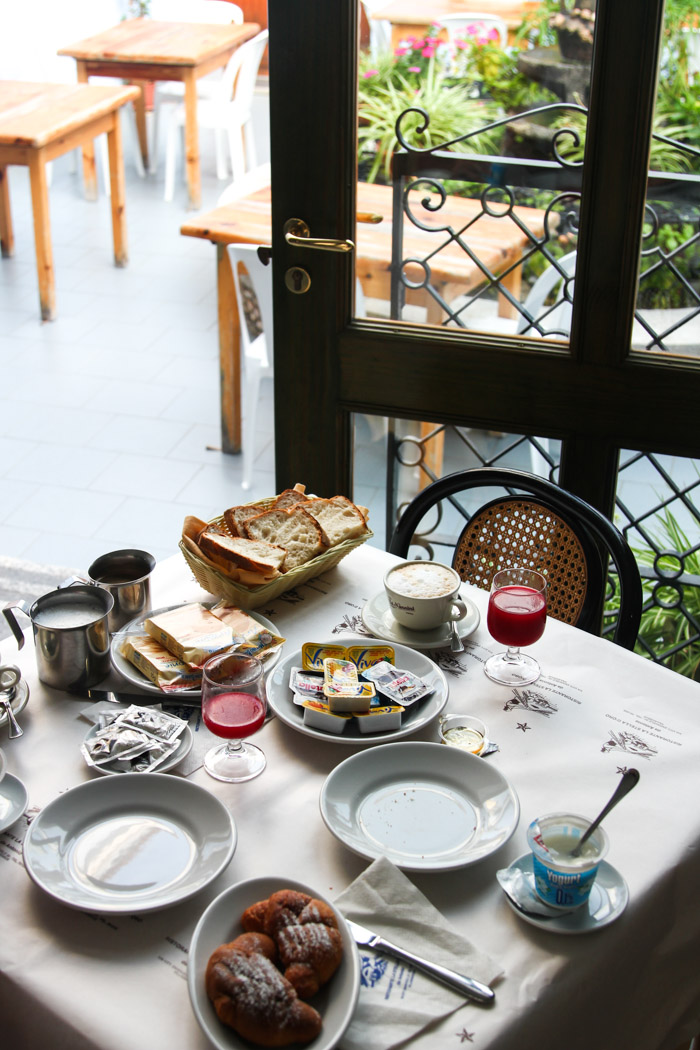
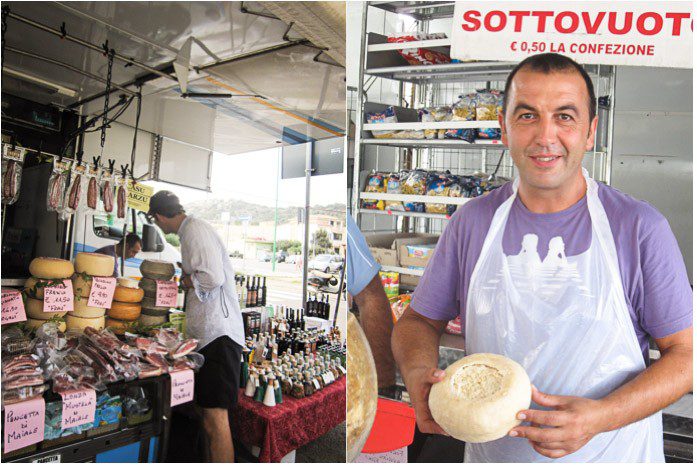
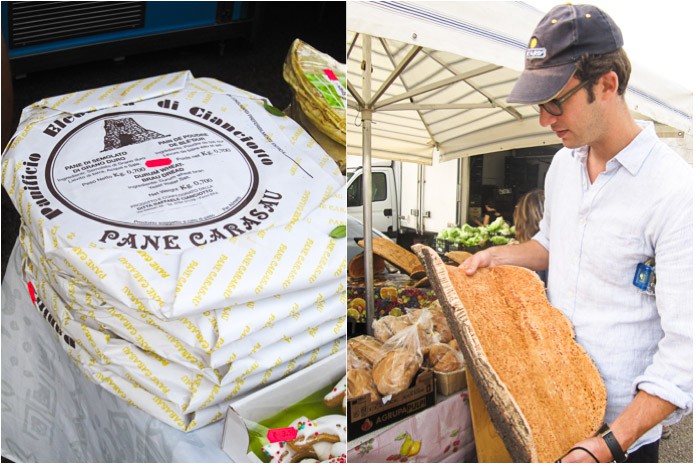
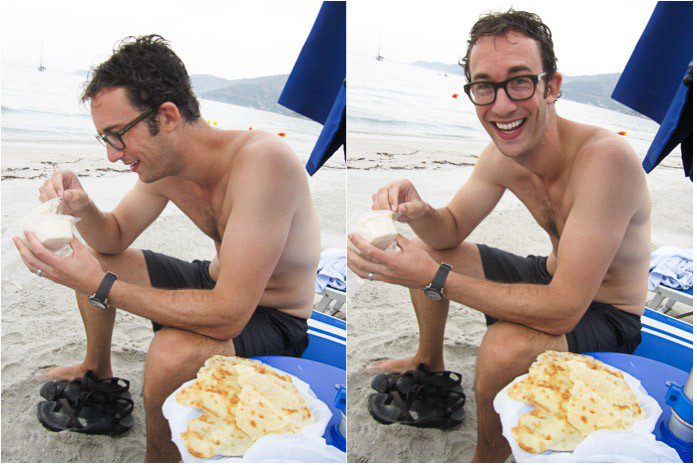
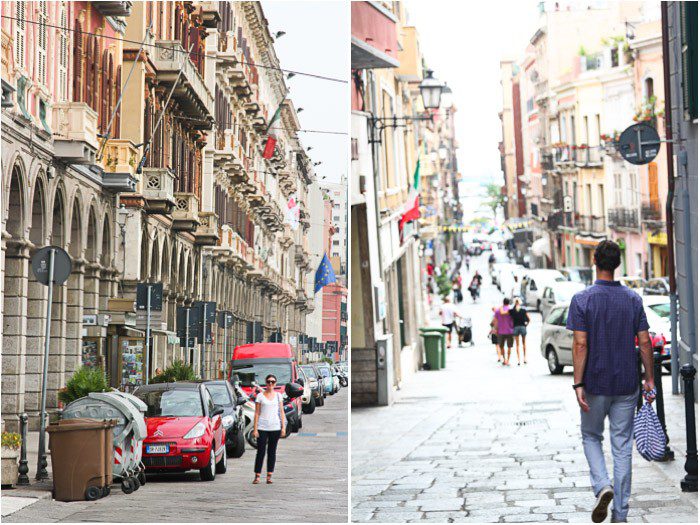
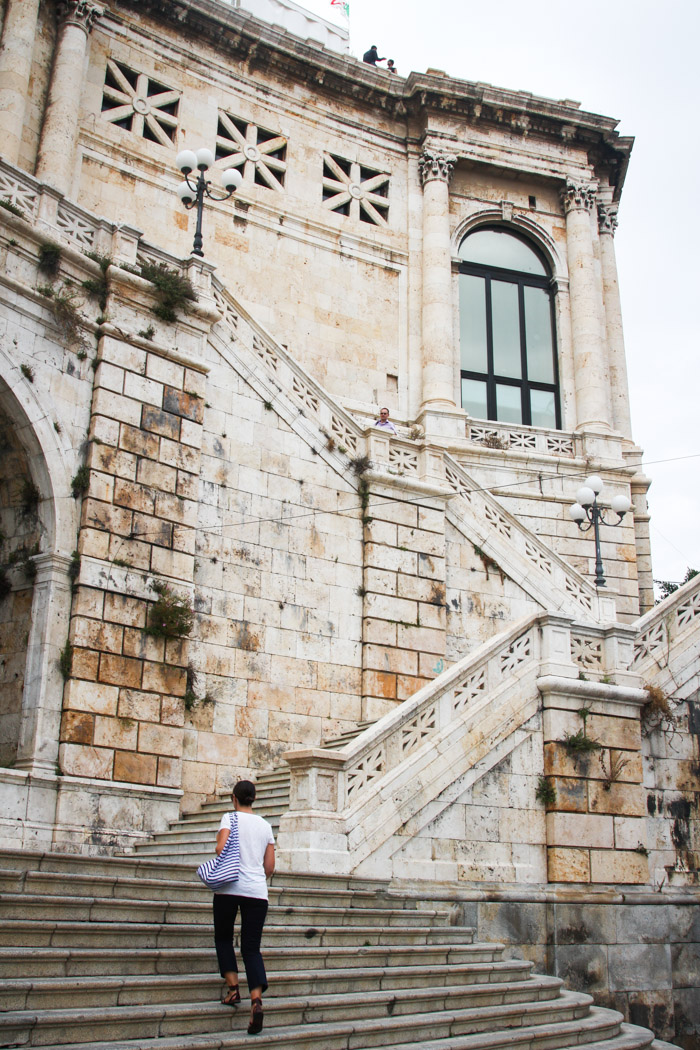
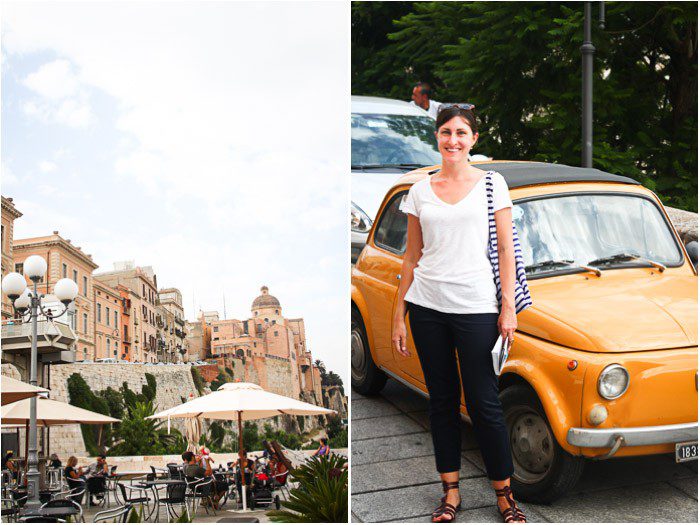
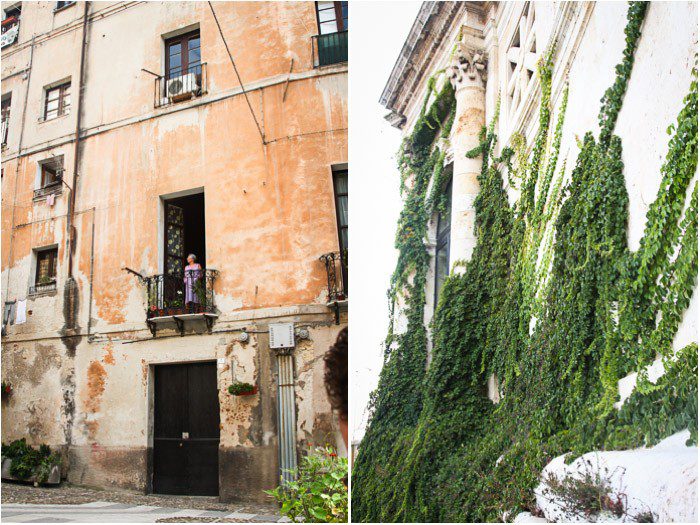
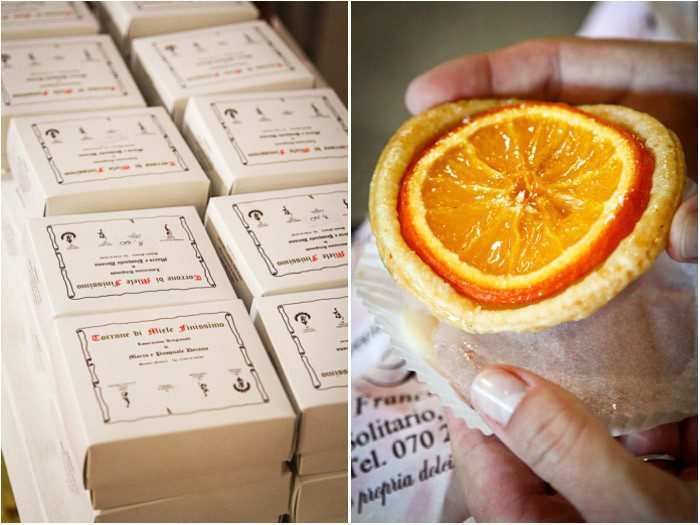
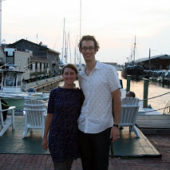
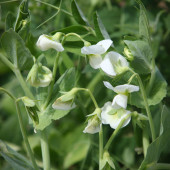
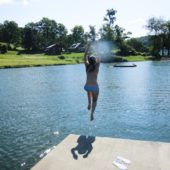
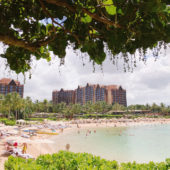









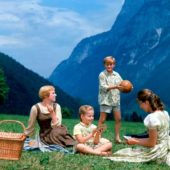
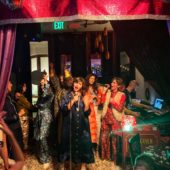
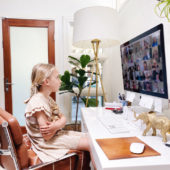
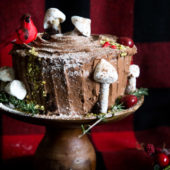


















50 Comments